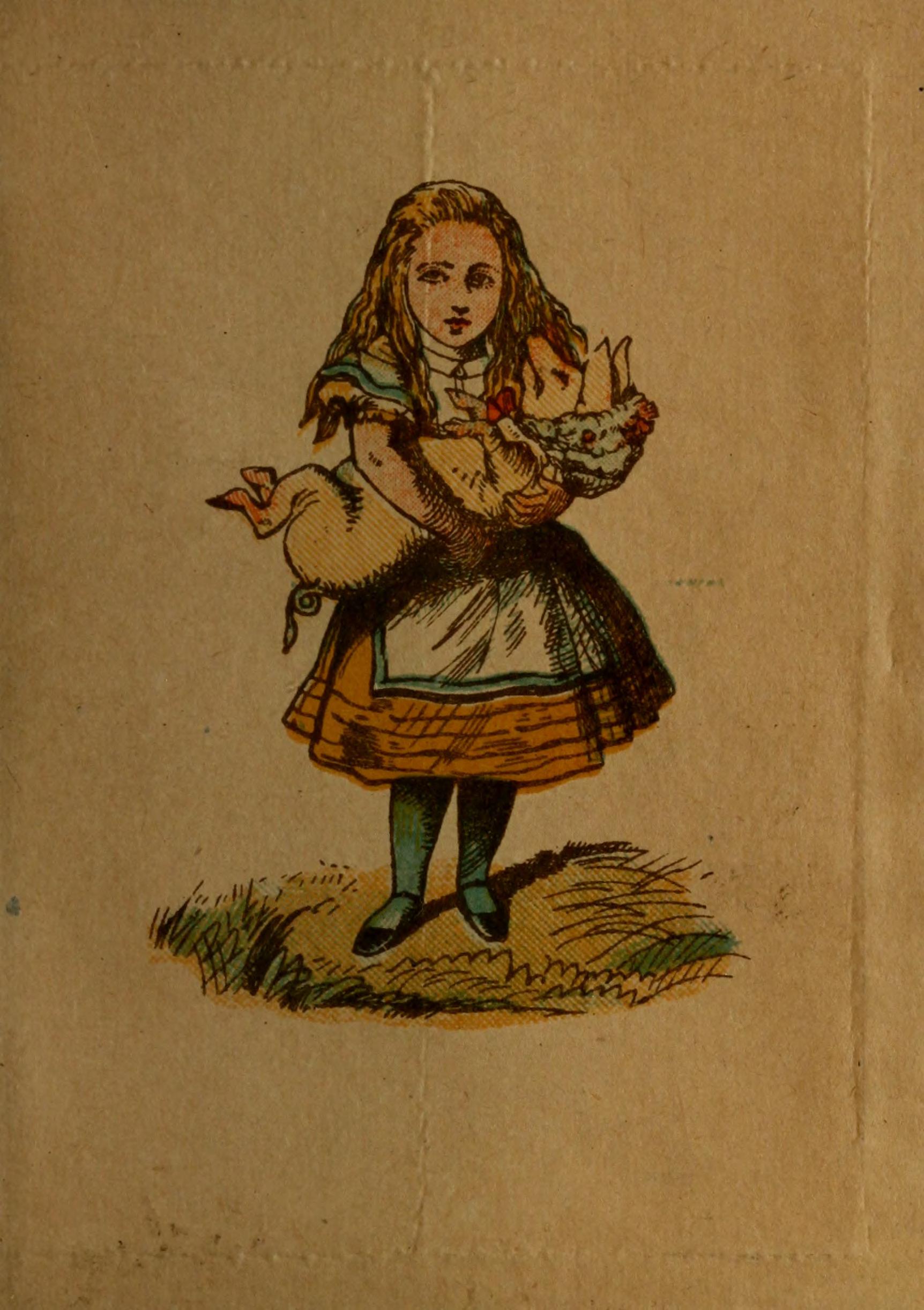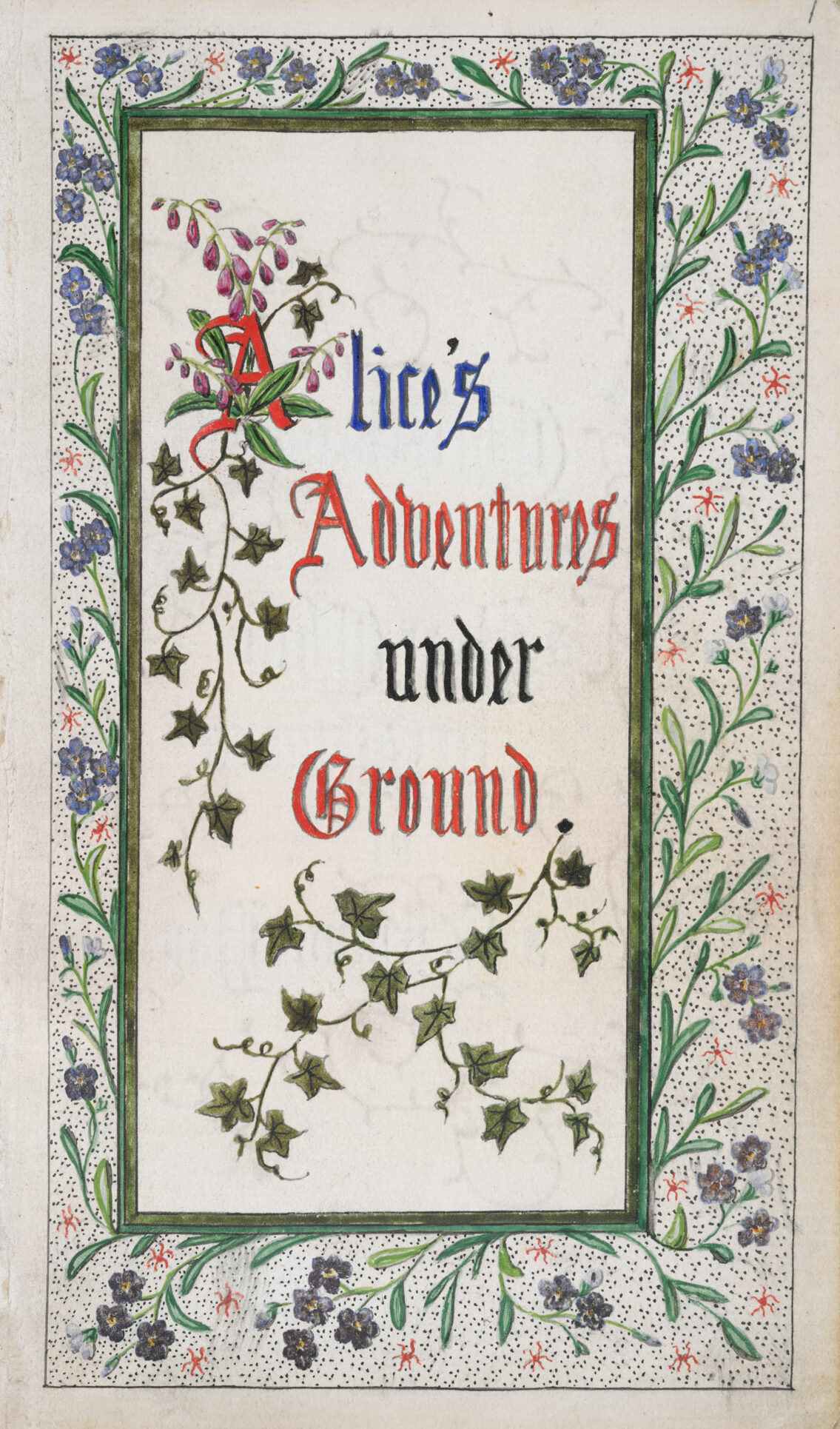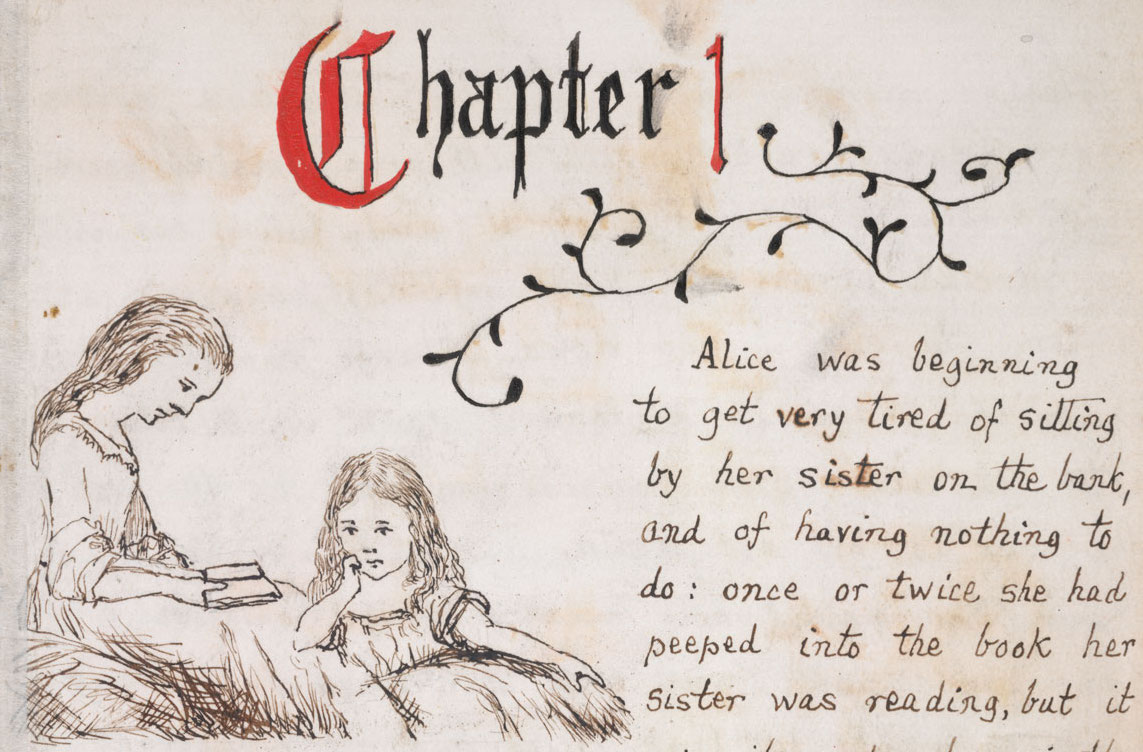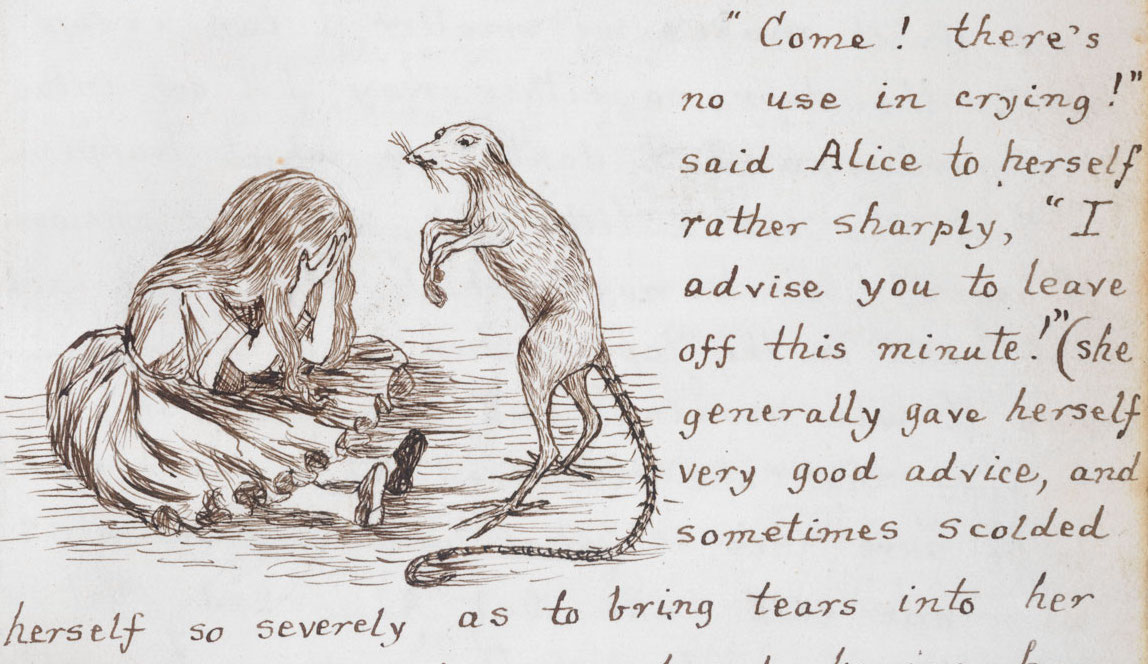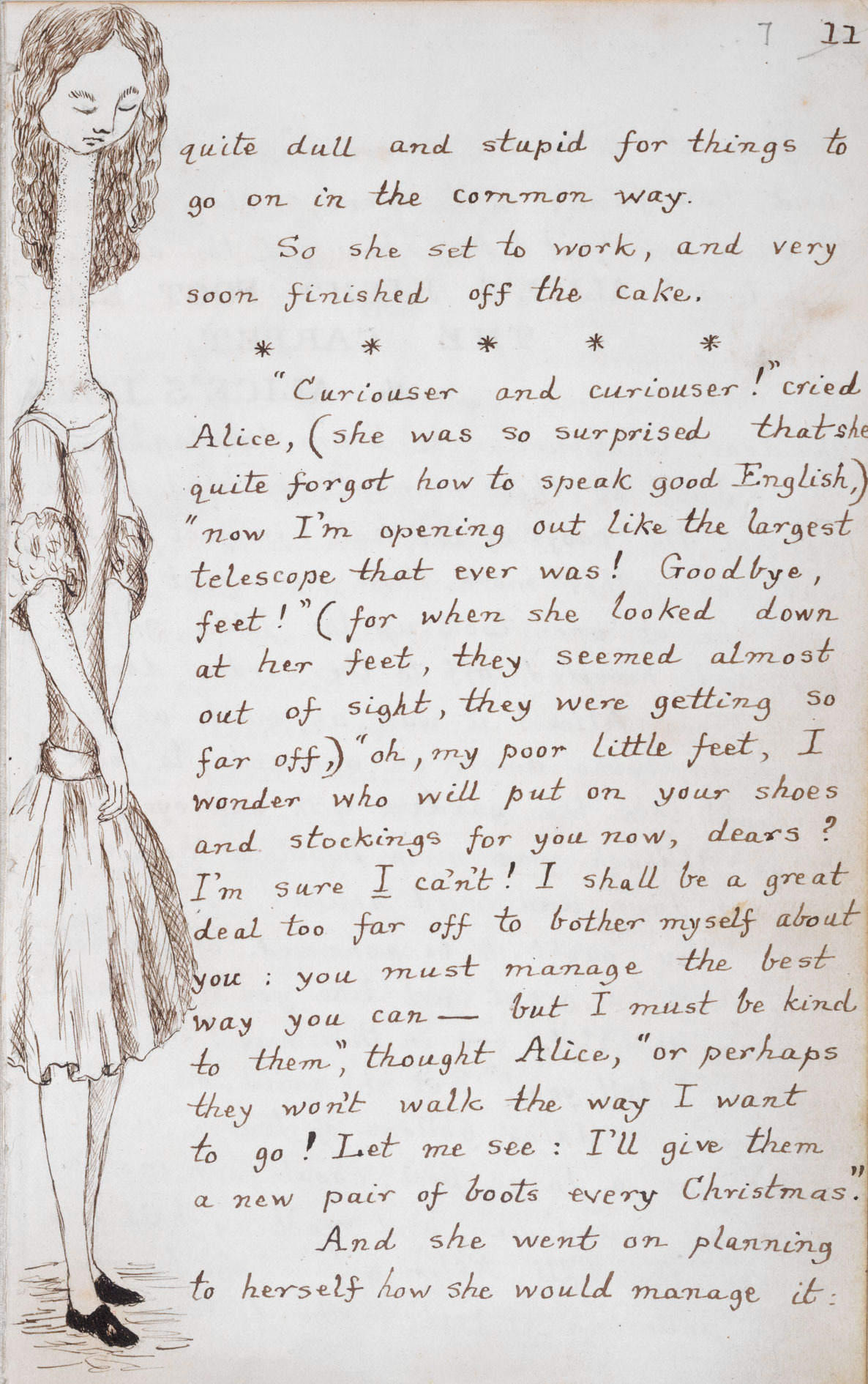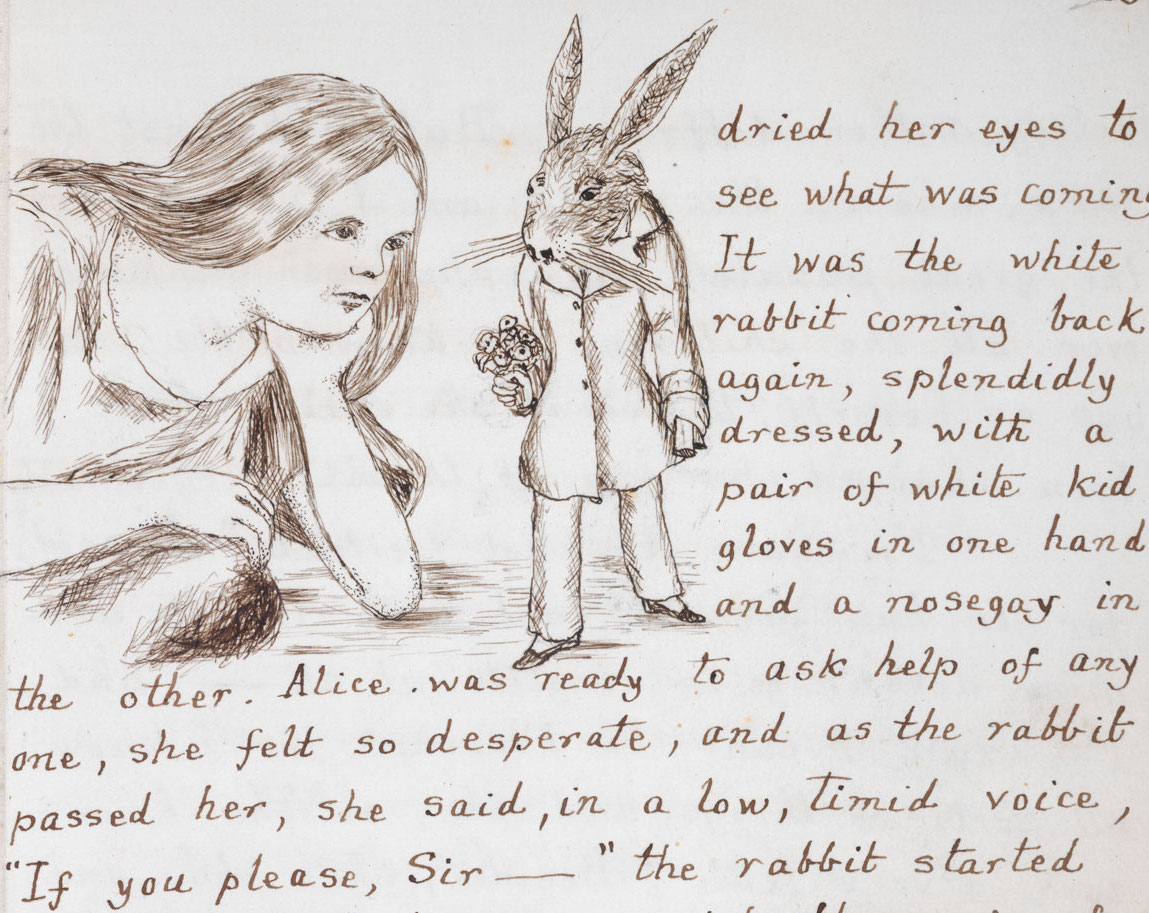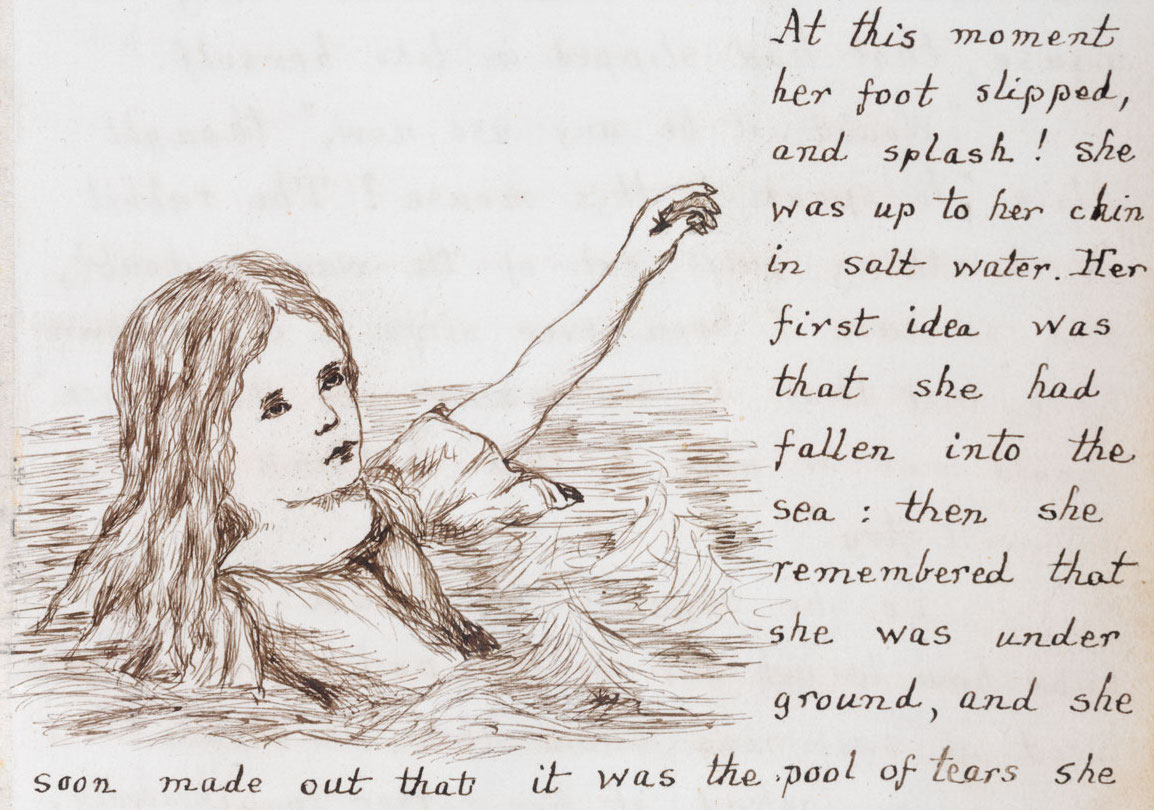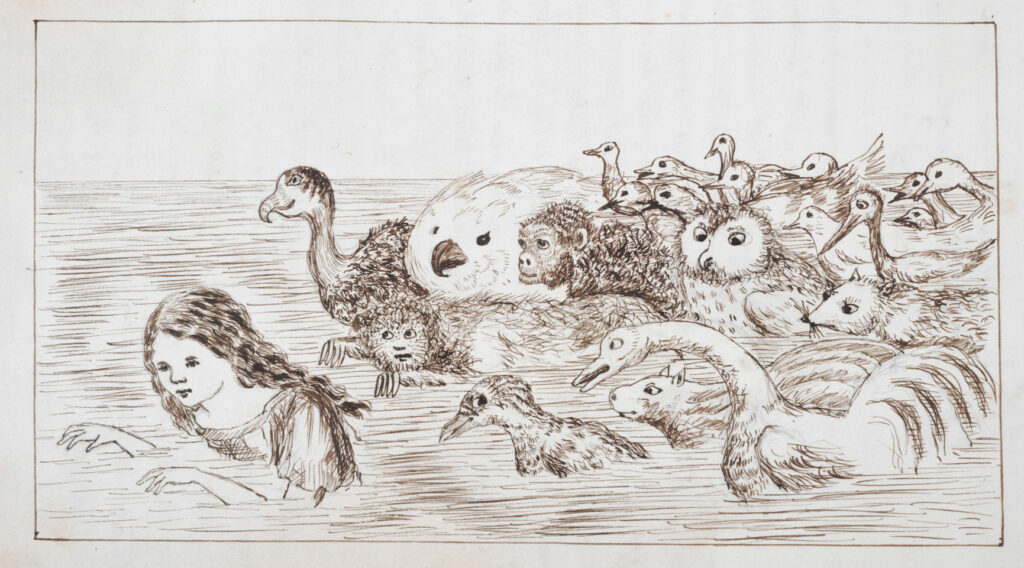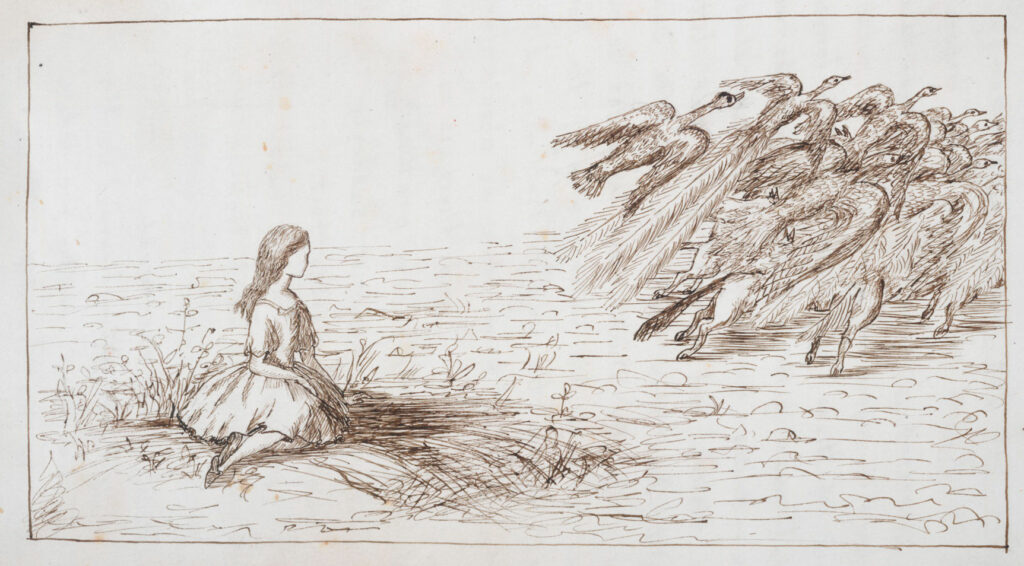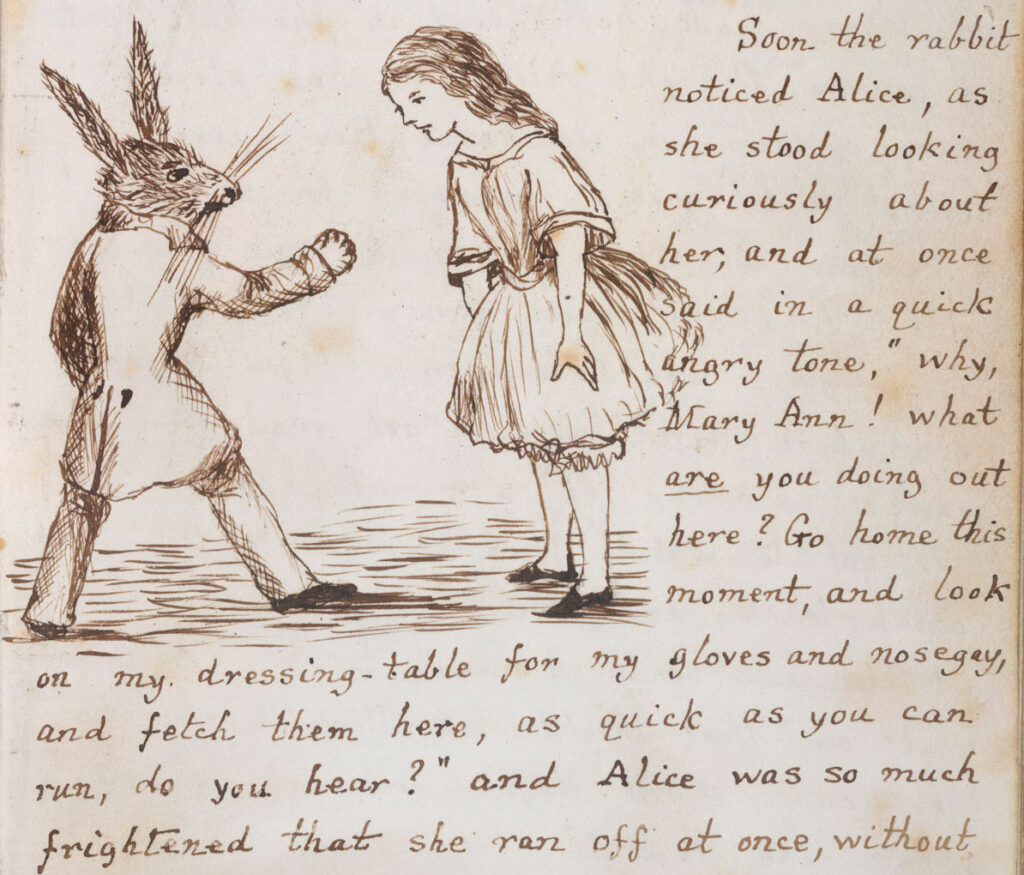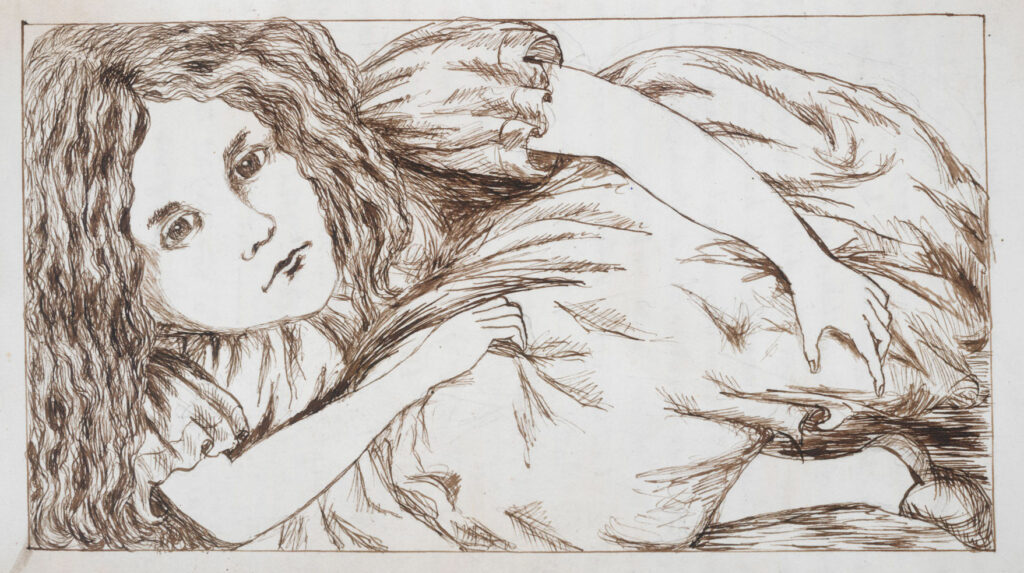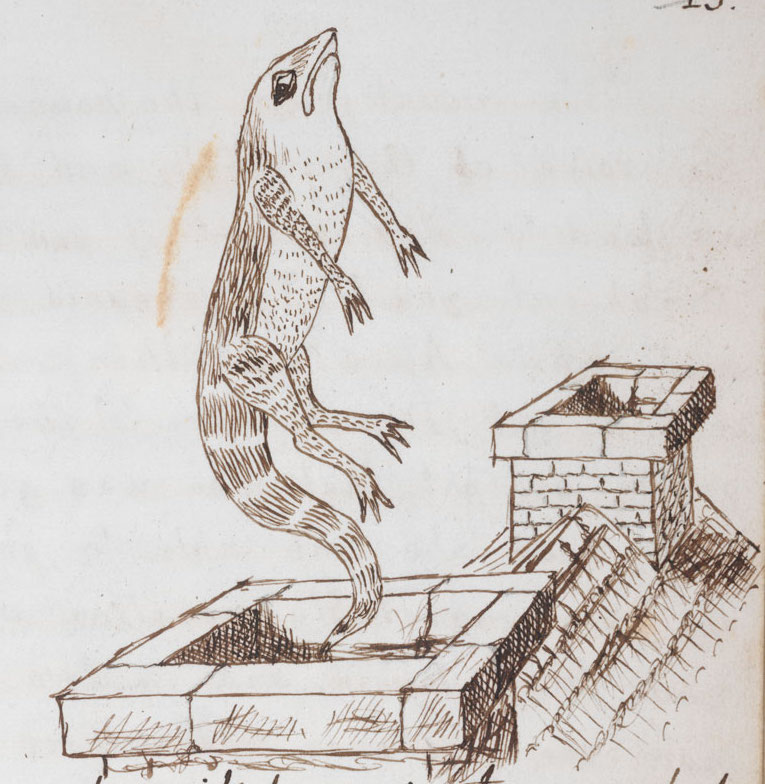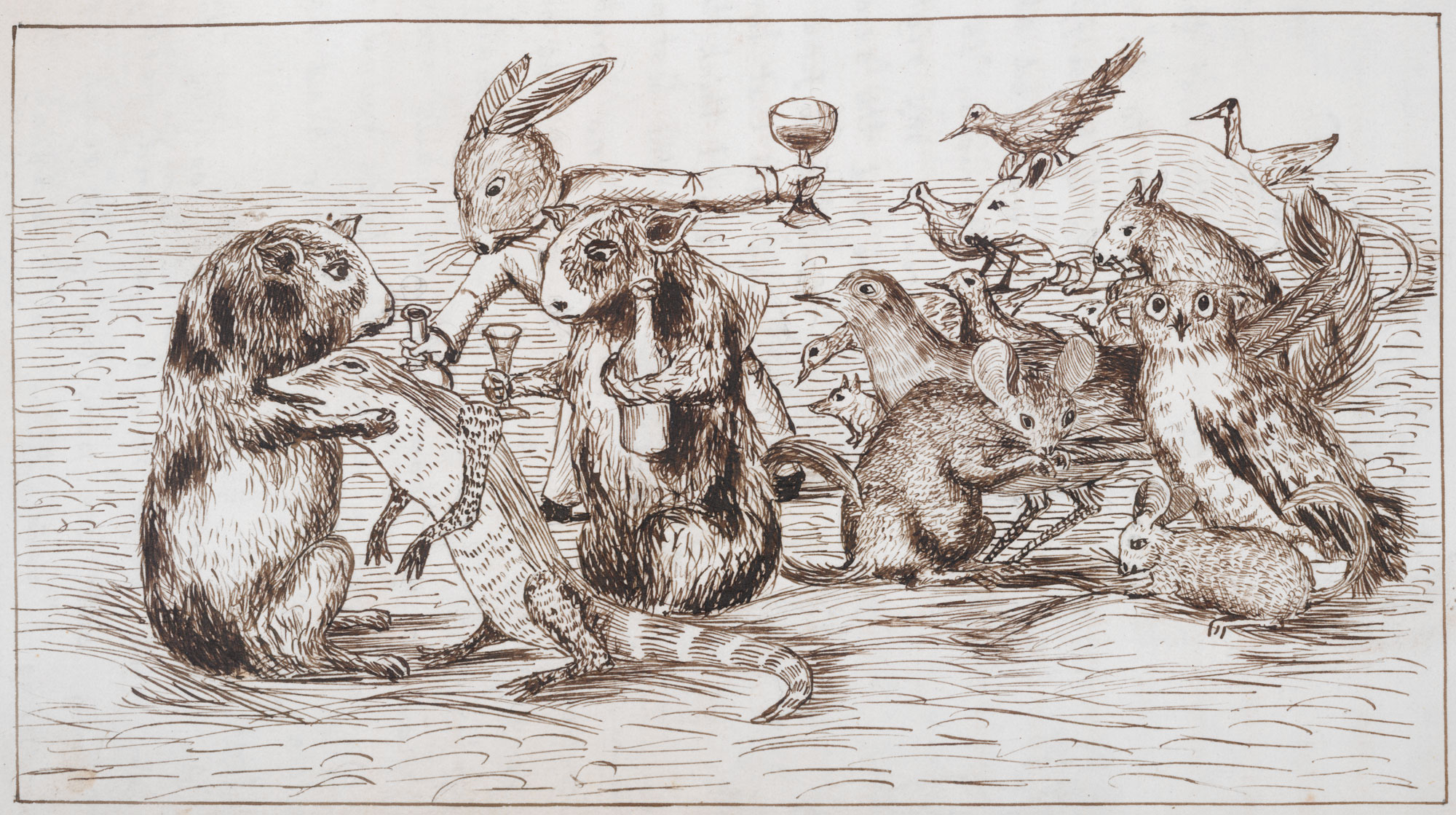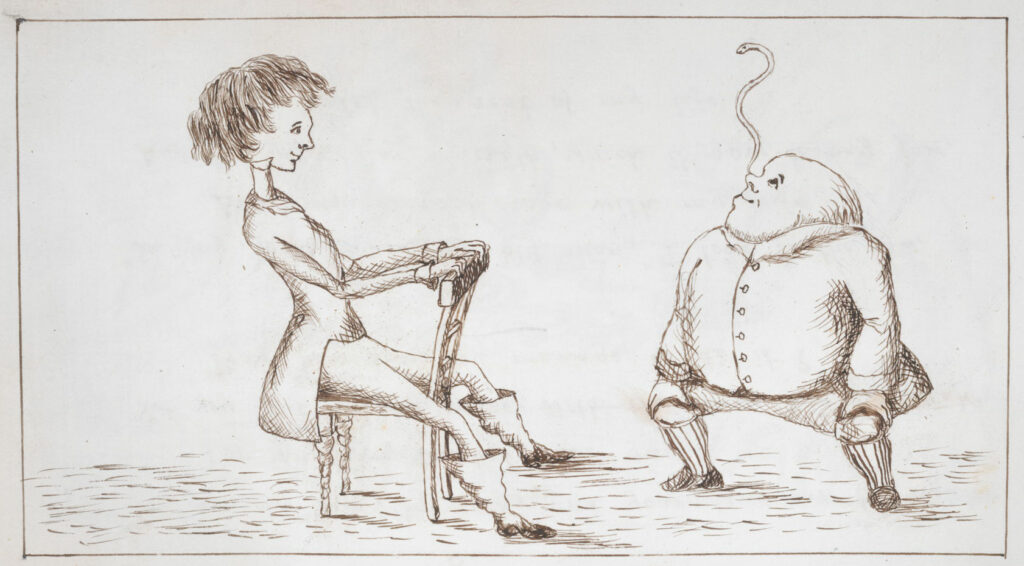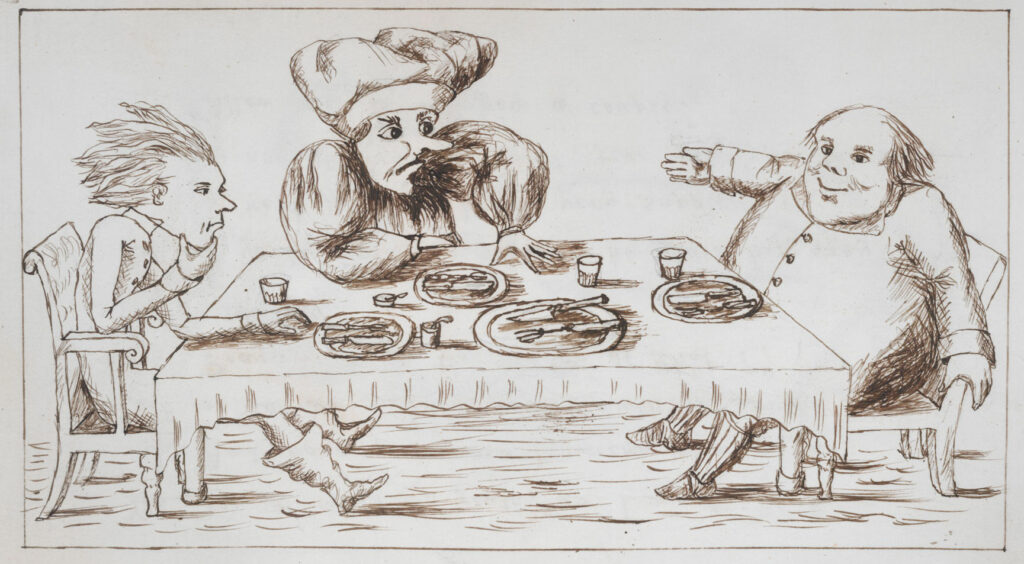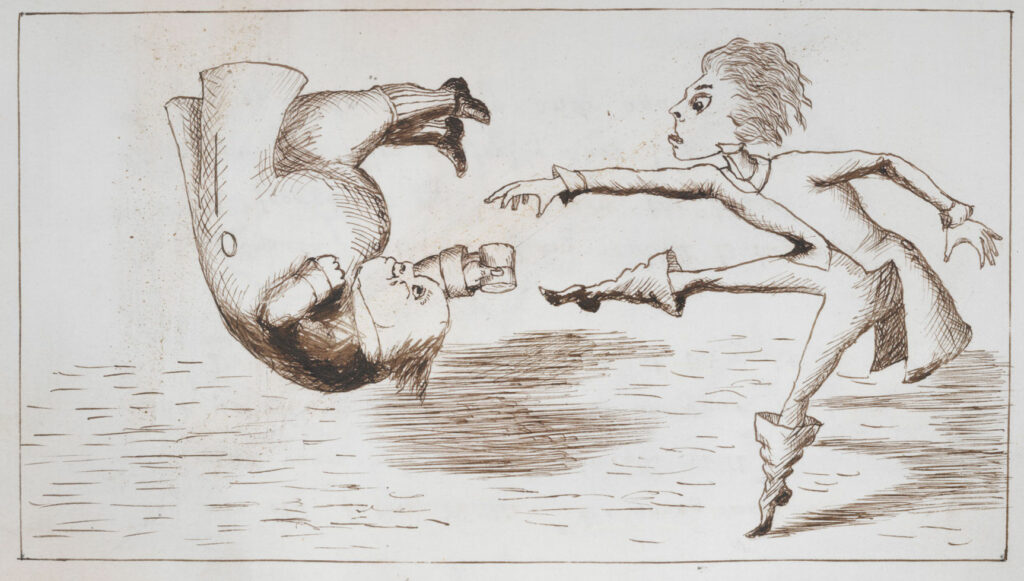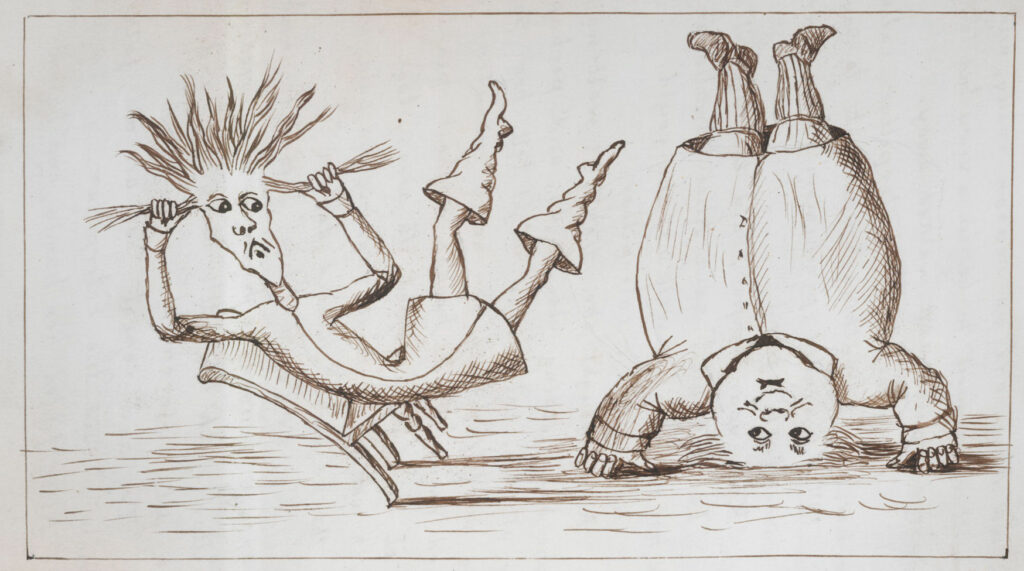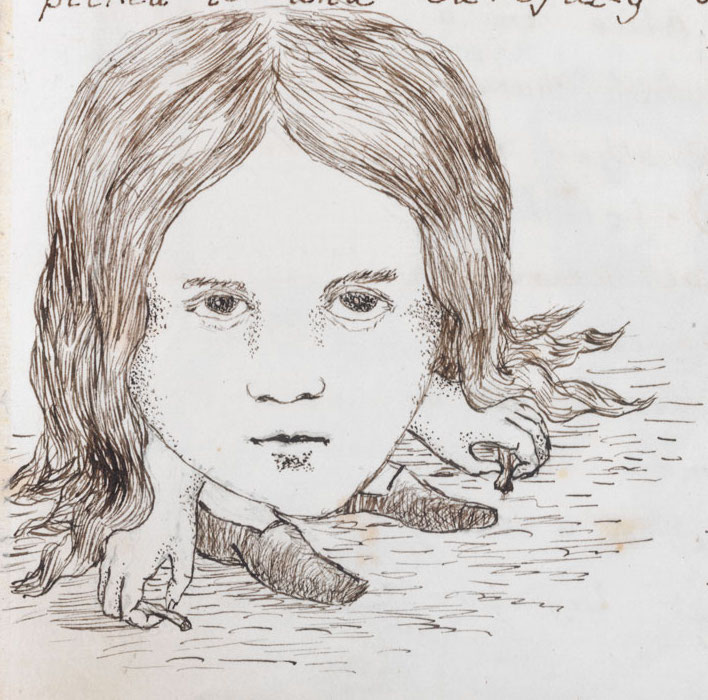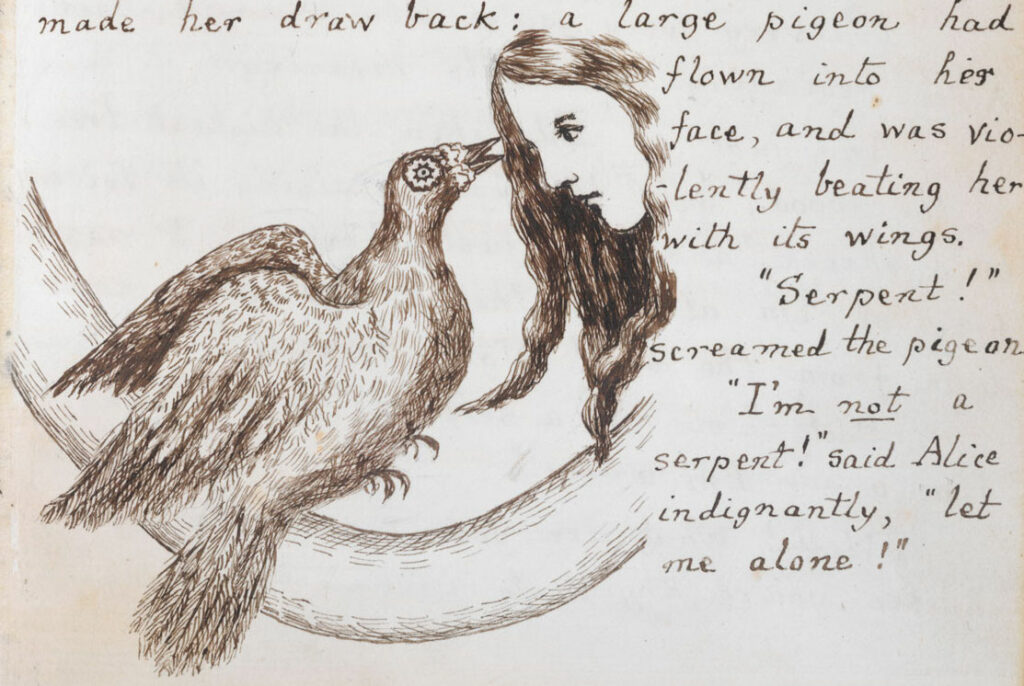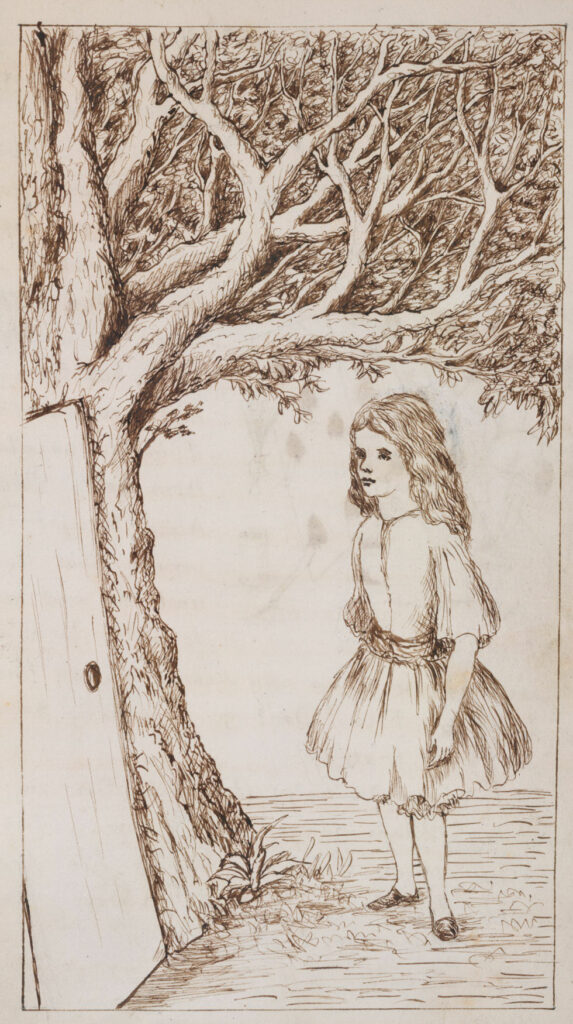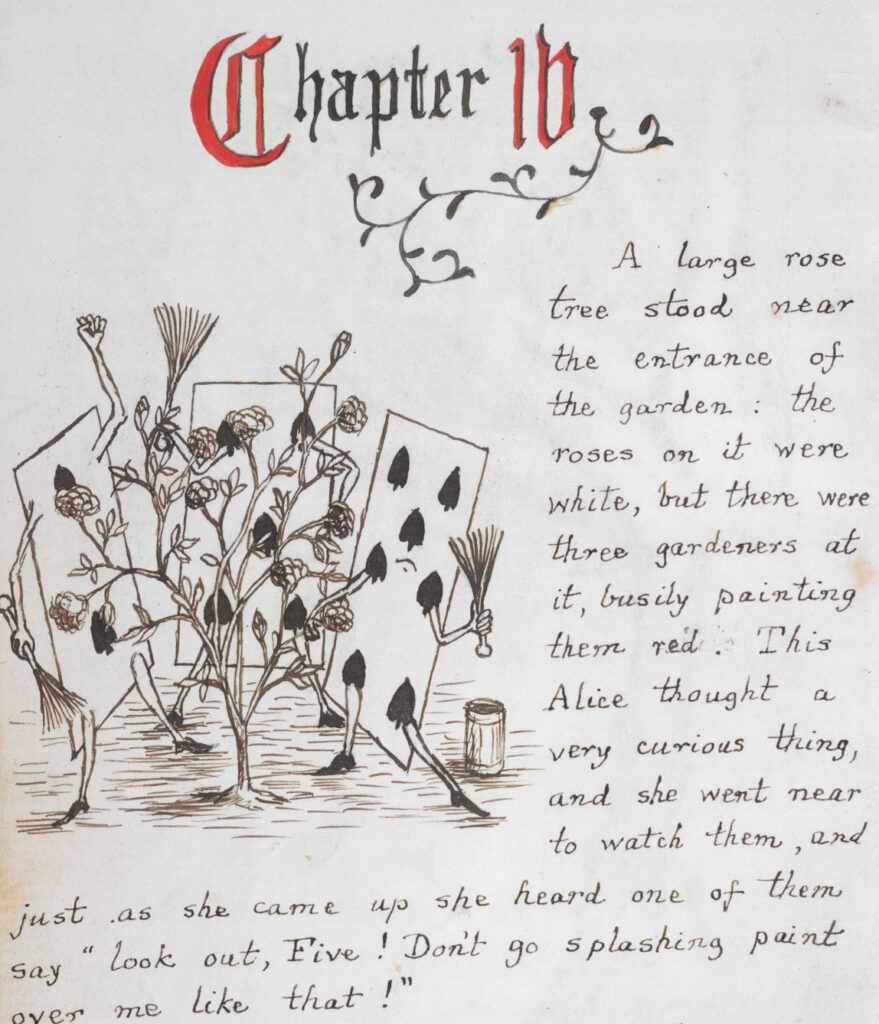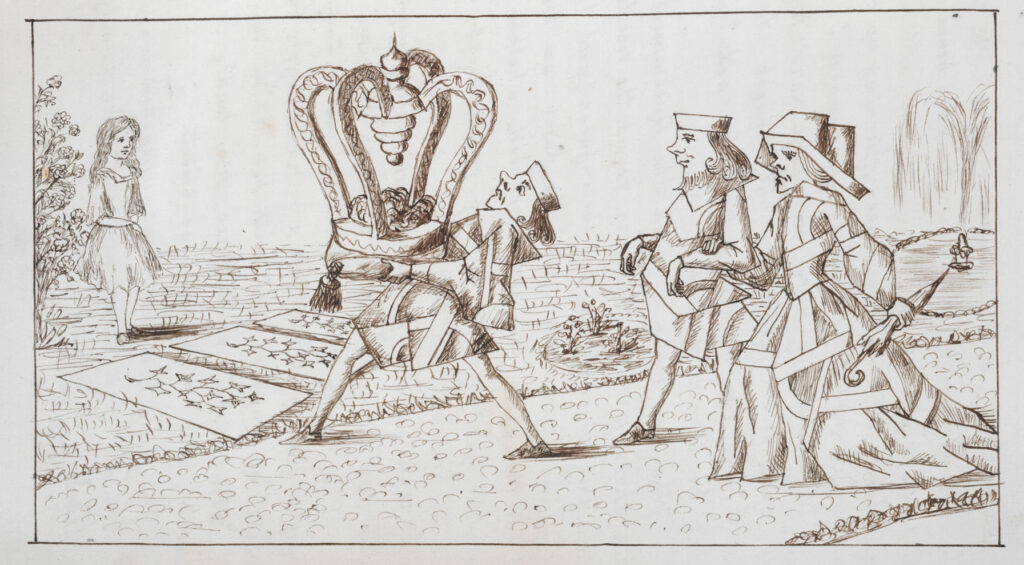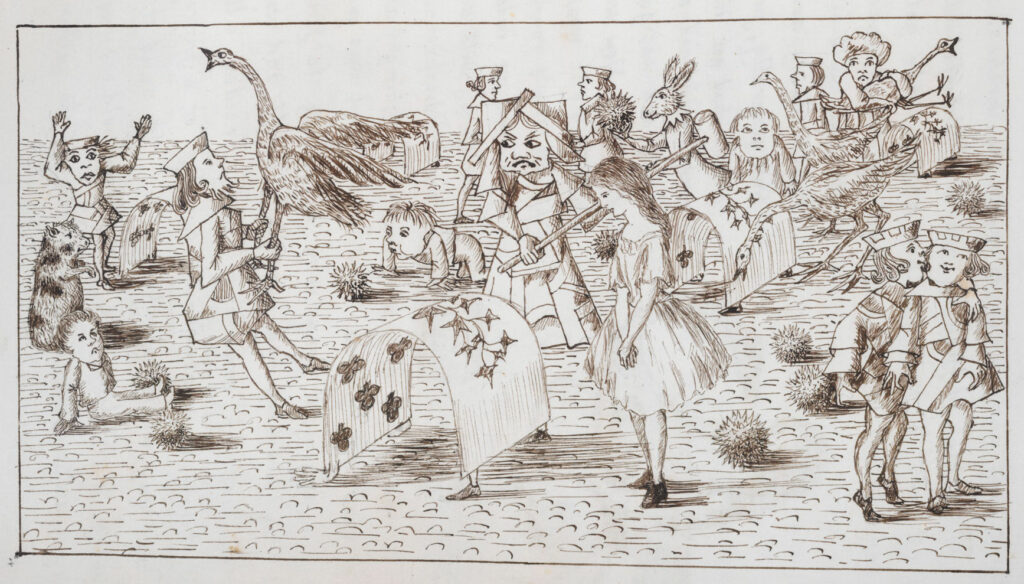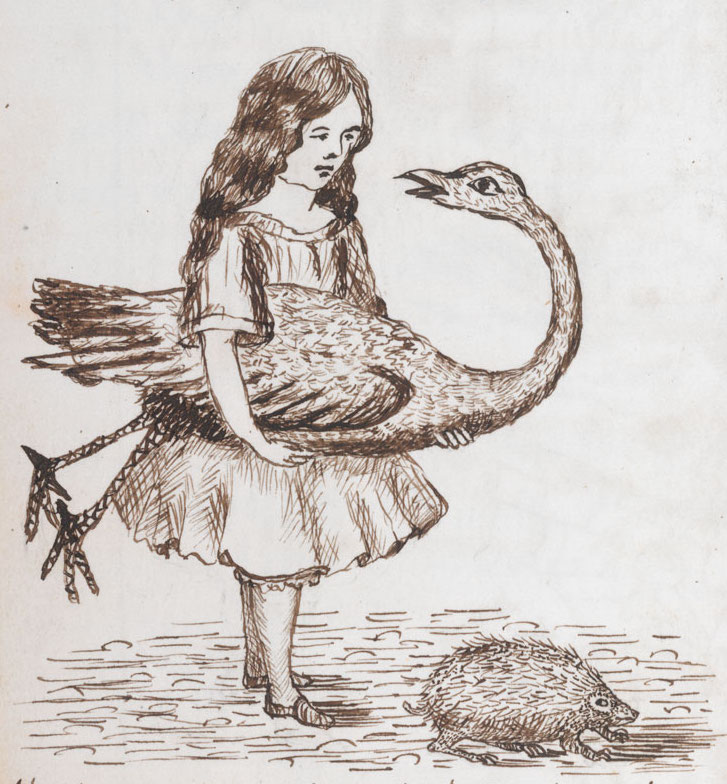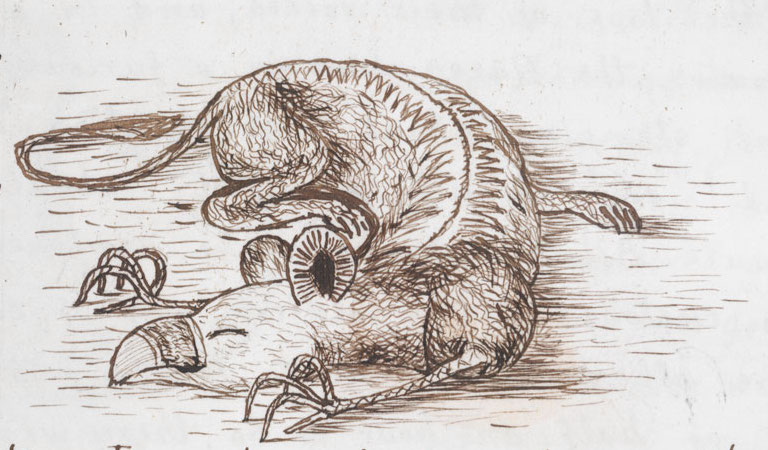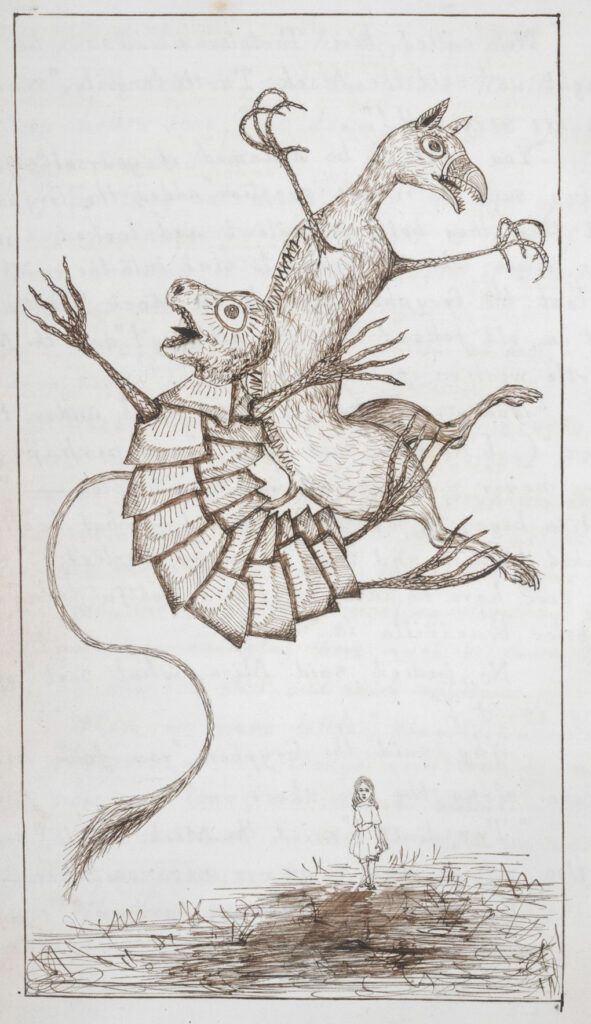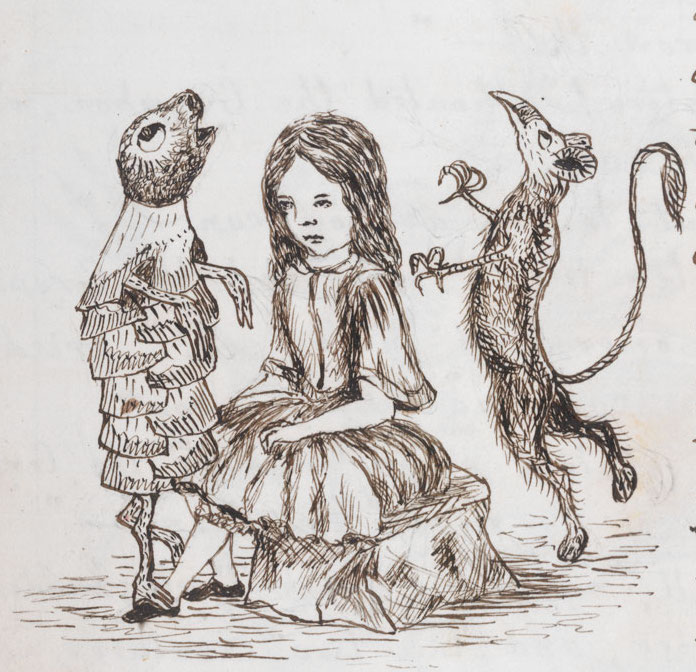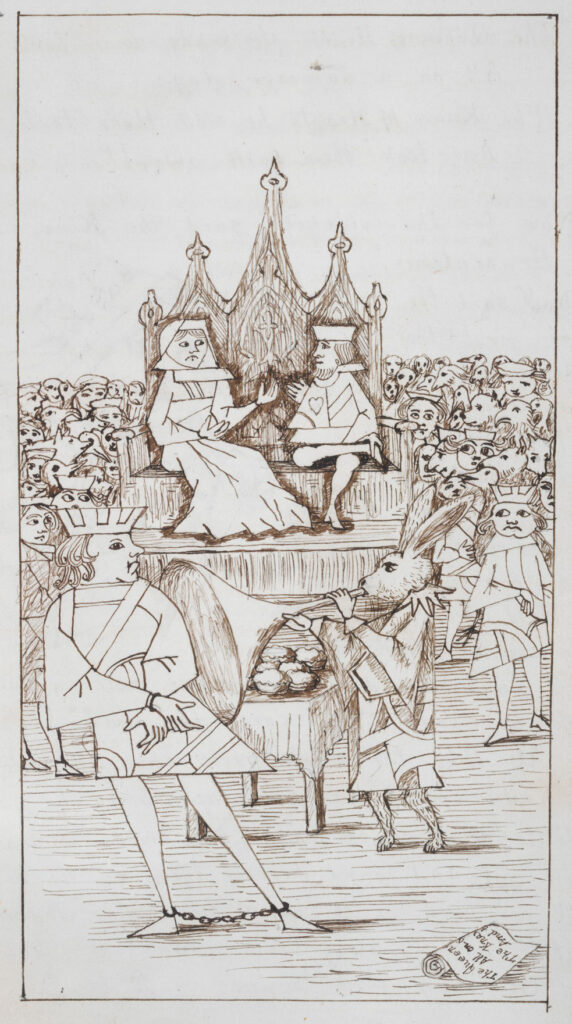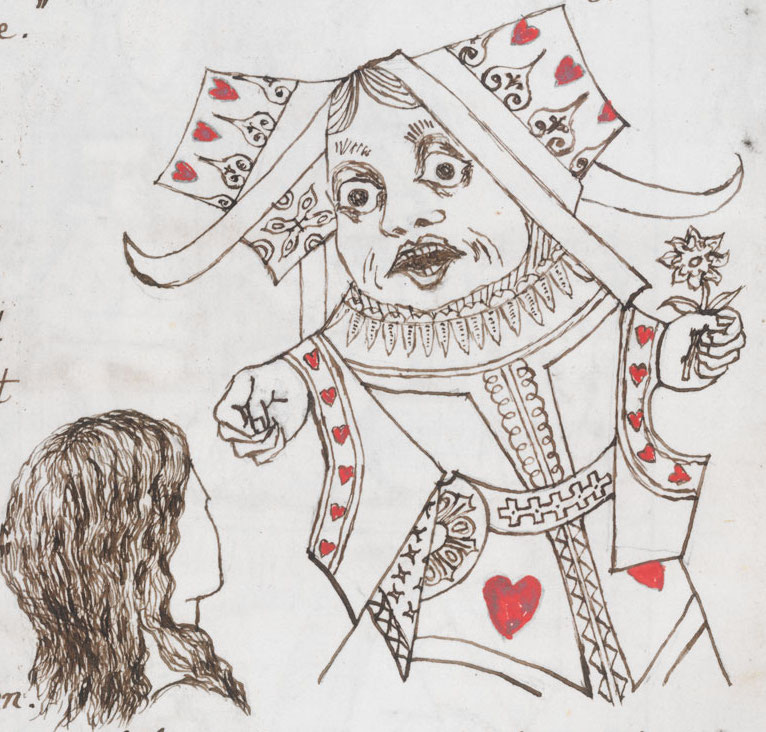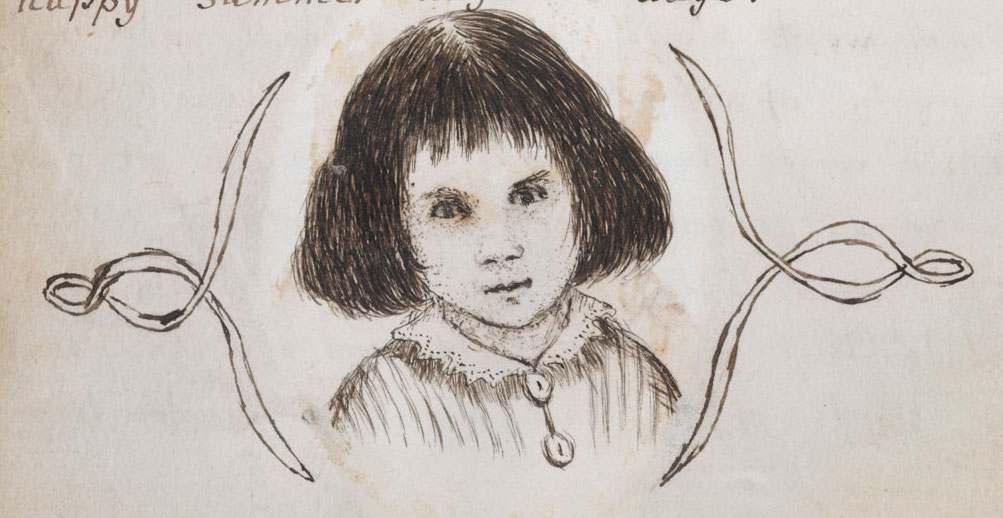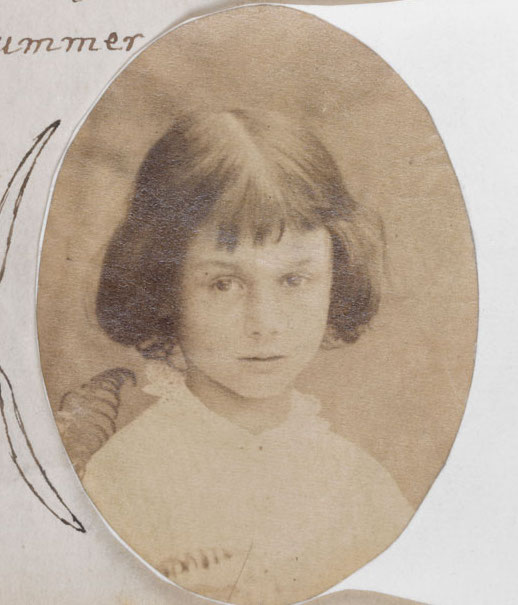John Tenniel
John Tenniel’s illustrations are by far the most popular drawings for Alice. Over the years from their first publication in for Wonderland (1865) and Looking Glass (1871), these illustrations have had a life of their own.The original illustrations are line drawings, closely following Lewis Carroll’s illustrations in spirit and sometimes in framing also. Tenniel’s illustrations have had a very strong impact on all the later illustrations by other artists as well. His depictions of certain characters, at least for me, is intimately tied with the words of Lewis Carroll. I cannot imagine the story without reference to his illustrations.
Tenniel’s monogram of his stylised initials are part of all the illustrations.
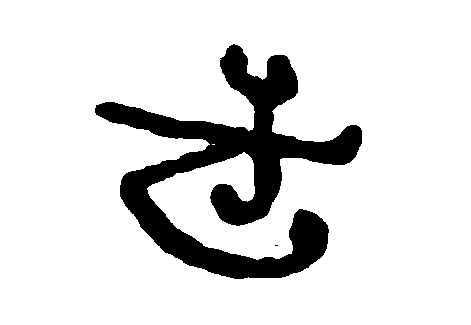
Several later renditions of these were coloured or supplemented by full colour plates by other artists. We will make a separate post for these modified colour illustrations later. In this post we will see only the original illustrations as they appear in the 1865 edition a total of 42 including the front piece.
Over the years I have used several of these images in my presentation and work.
All images in public domain unless mentioned otherwise.

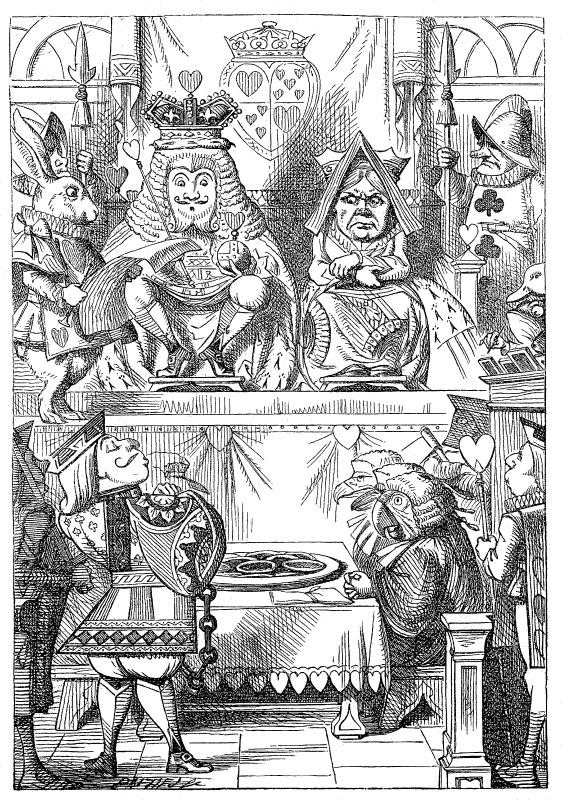
Front piece: the court of the king and queen of hearts.
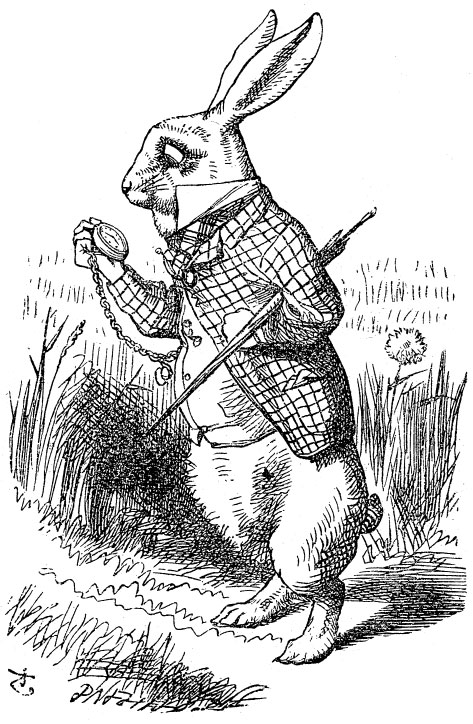
The White rabbit.
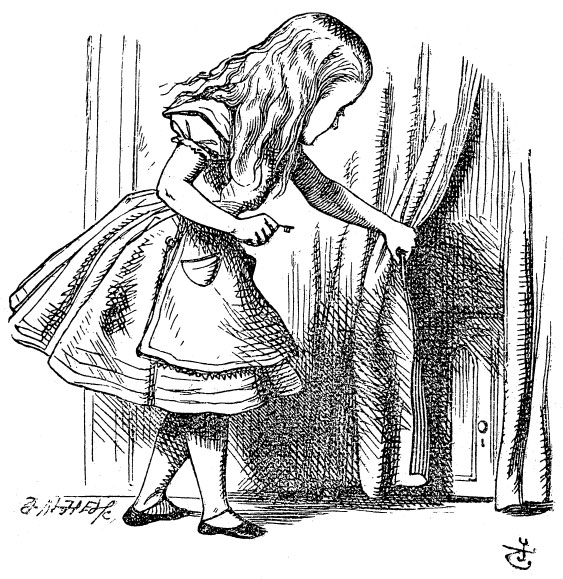
Alice finds the little door.

Drink me! said the label on the bottle.

Alice becomes enlarged.
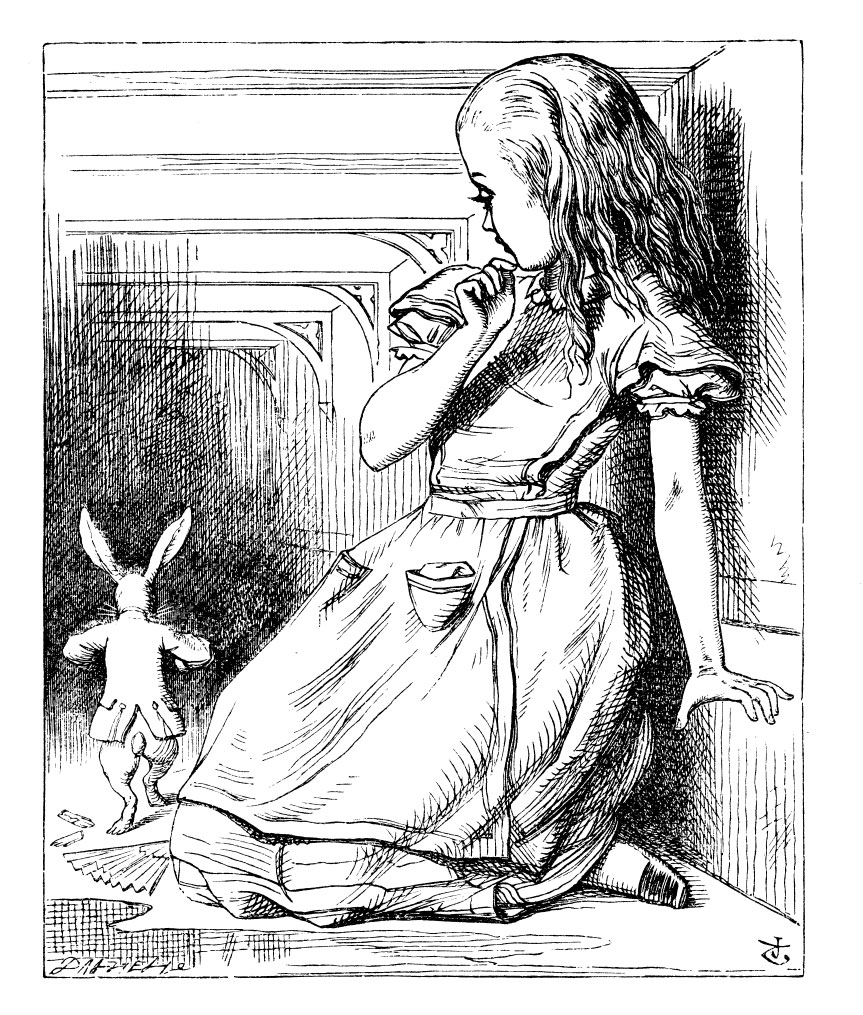
The white rabbit runs away.
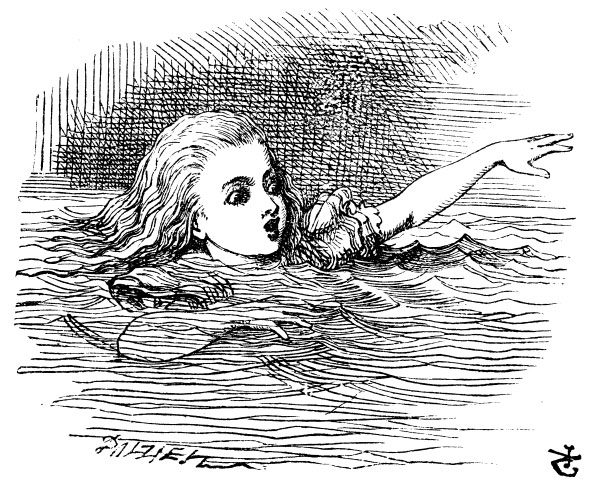
Alice in pool of tears.

The mouse swims away.
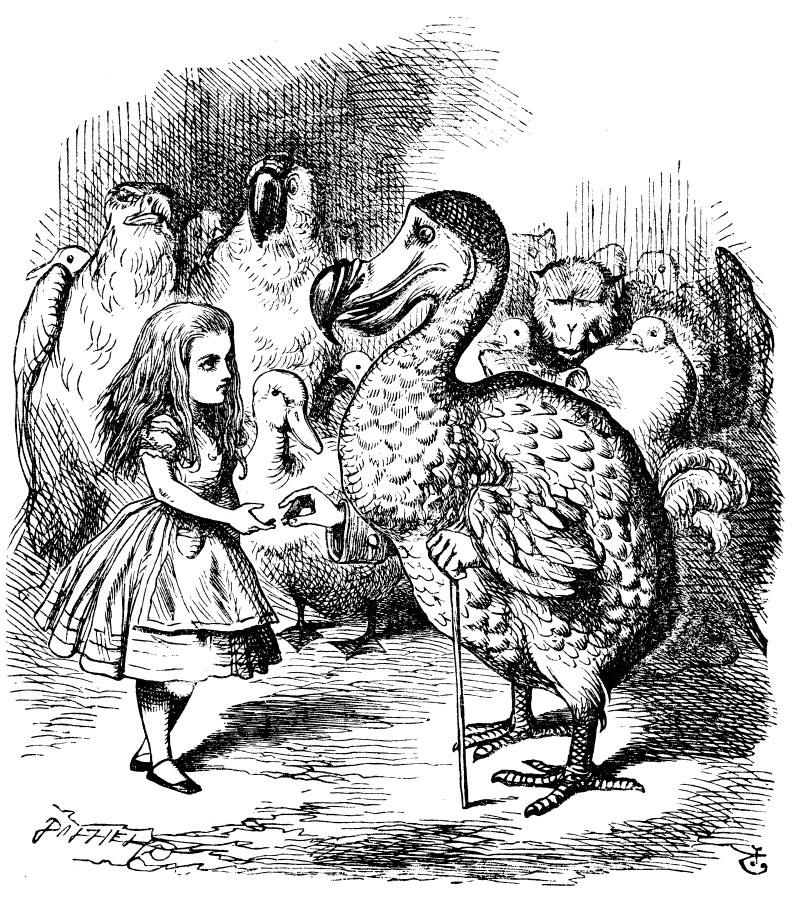
The Dodo presents Alice a thimble.

The mouse’s long and sad tale.
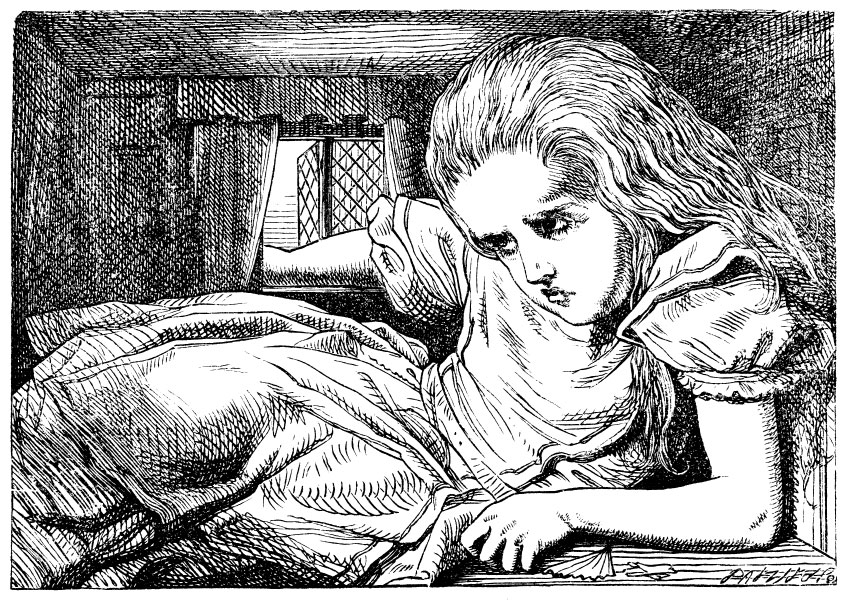
Alice went on growing and growing till she filled the room.
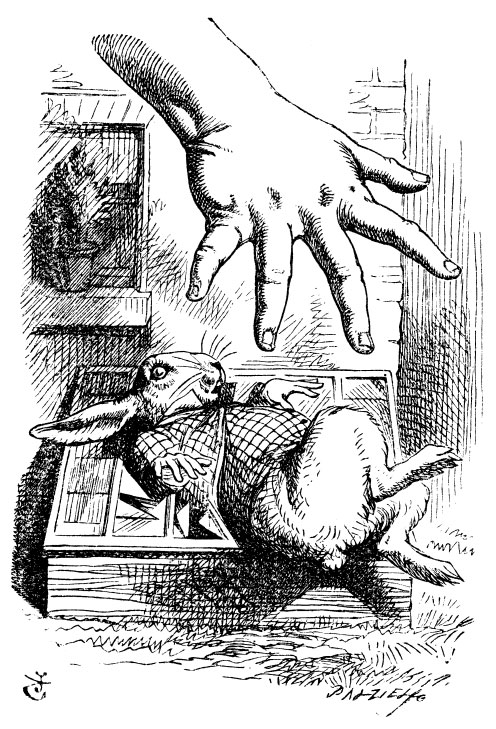
Alice tries to snatch the rabbit from the window.
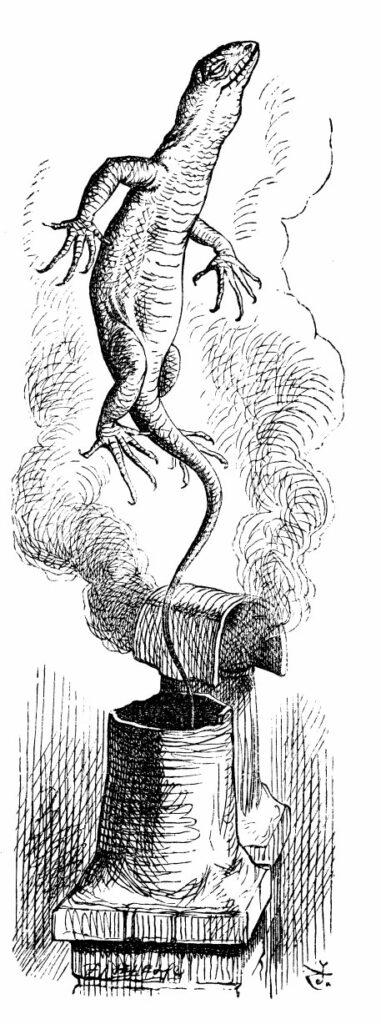
Alice kicks Bill the green lizard from the chimney.
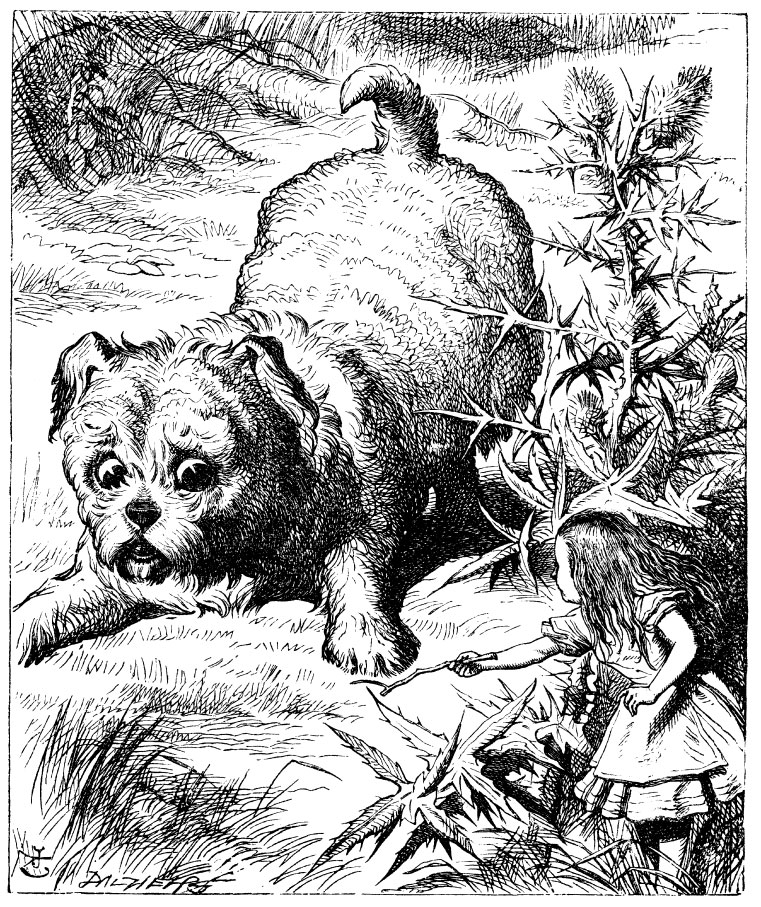
Alice throws a stick to the giant puppy to fetch.

Alice meets the caterpillar.
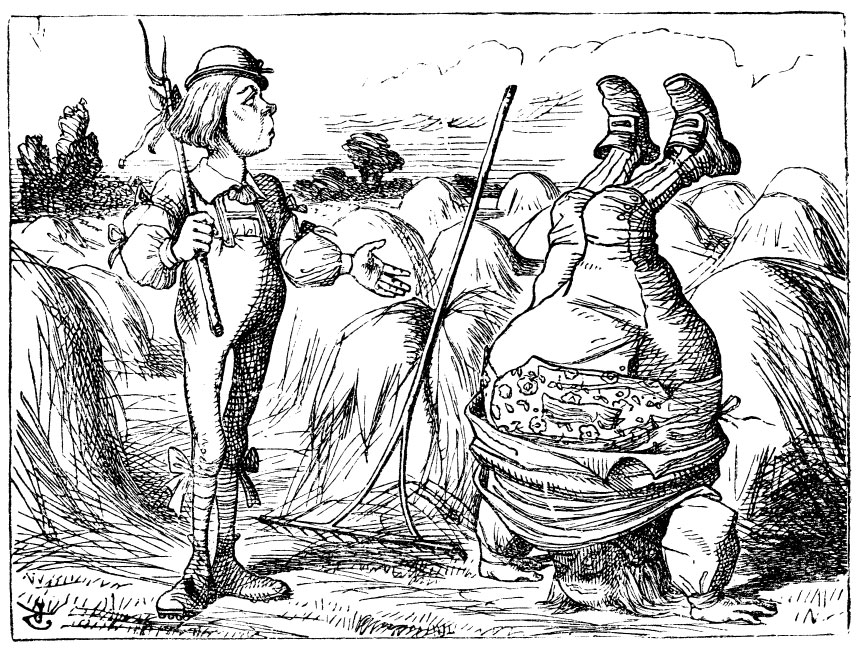
Old Father William stands on his head.
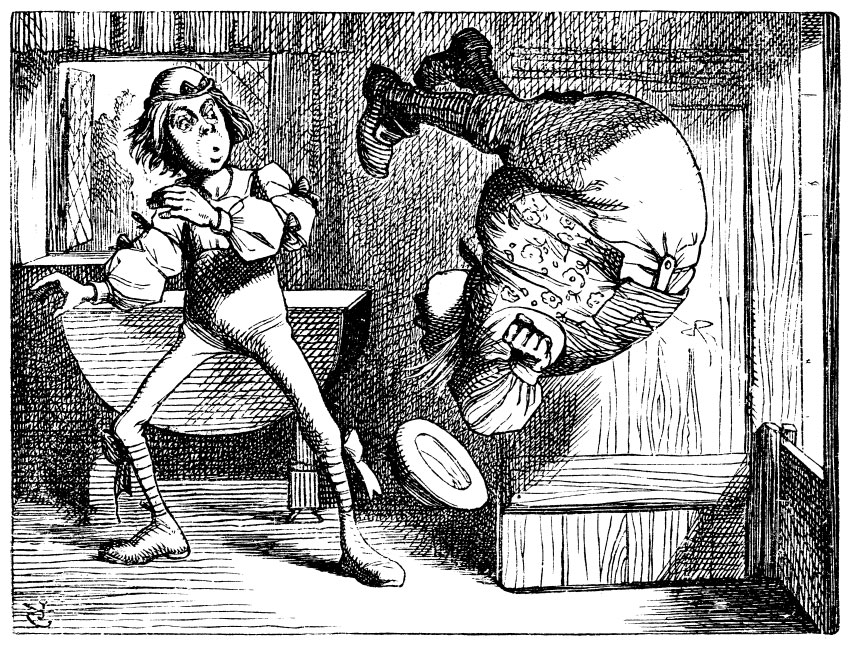
Old Father William does a back-somersault.
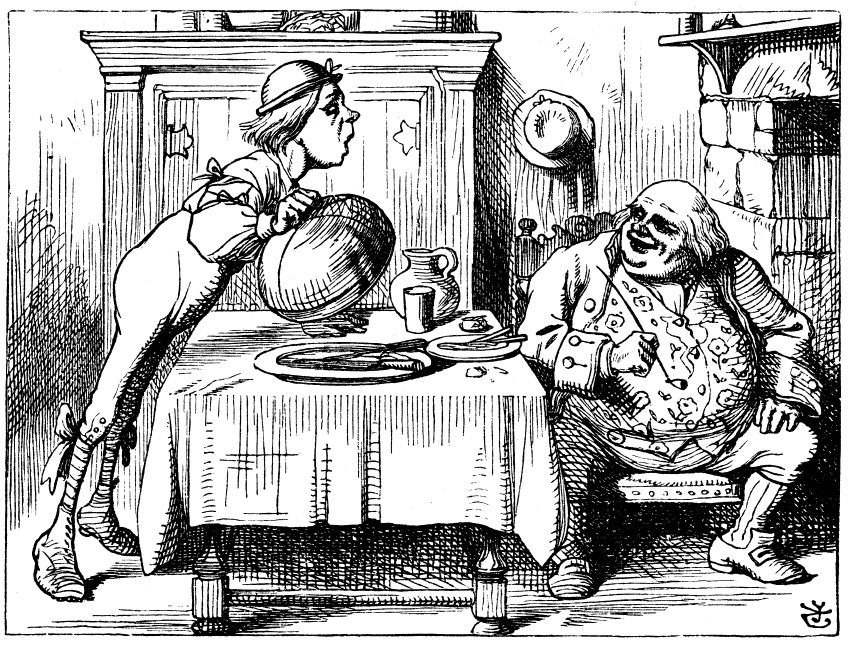
Old Father William finishes the goose, with the bones and the beak.
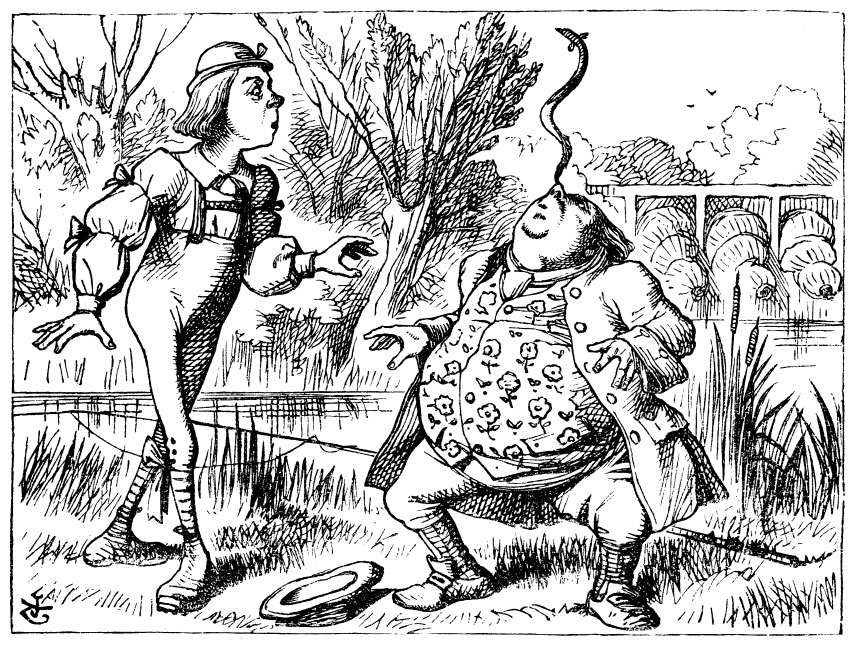
Old Father William balances an eel on his nose.
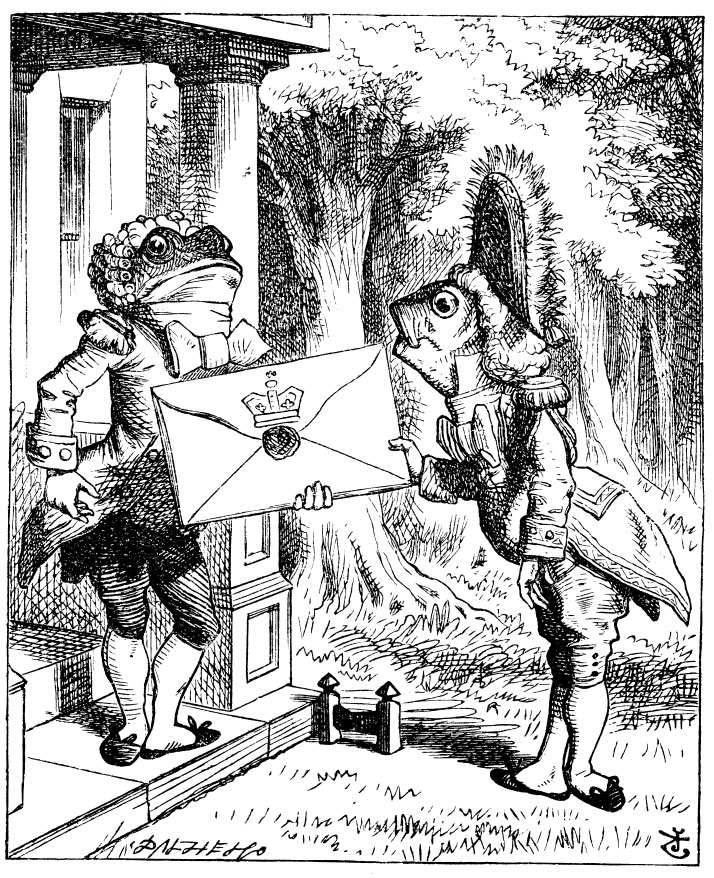
The fish-footman delivers the invitation from the Queen to play croquet.

Alice meets Duchess and the crying baby.
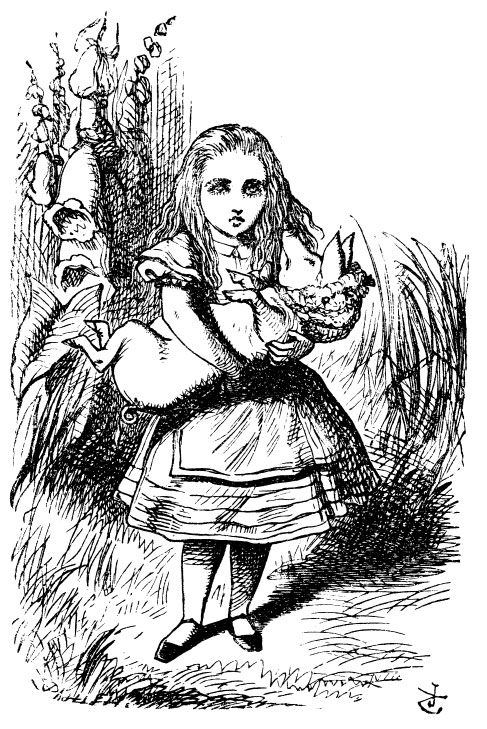
The baby turns to a pig!
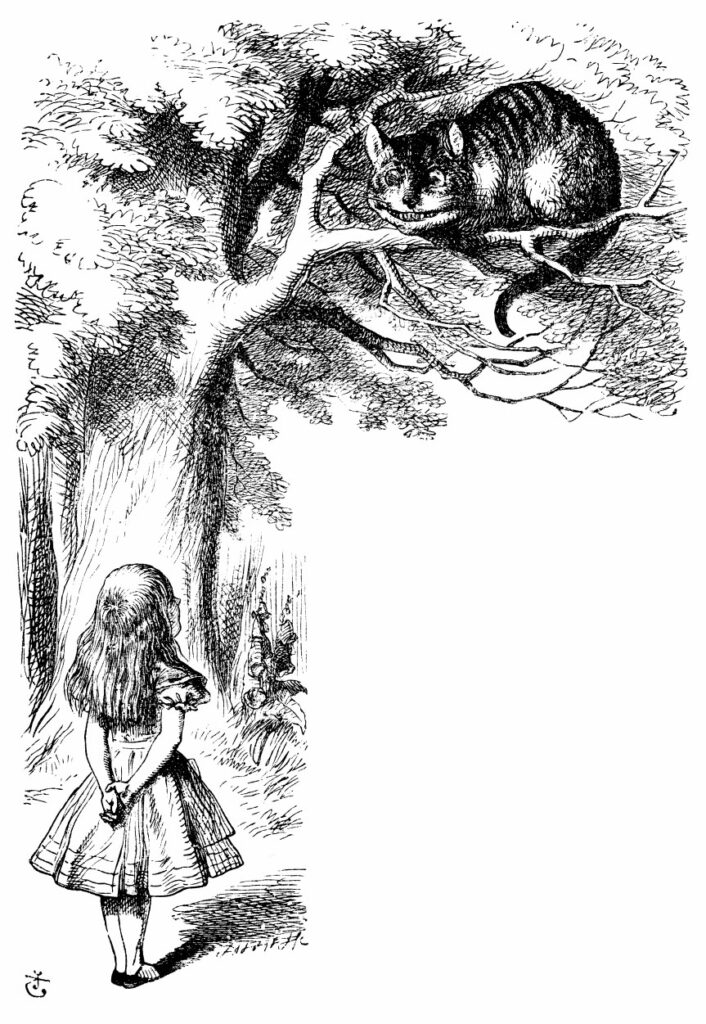
Alice meets the Cheshire cat.
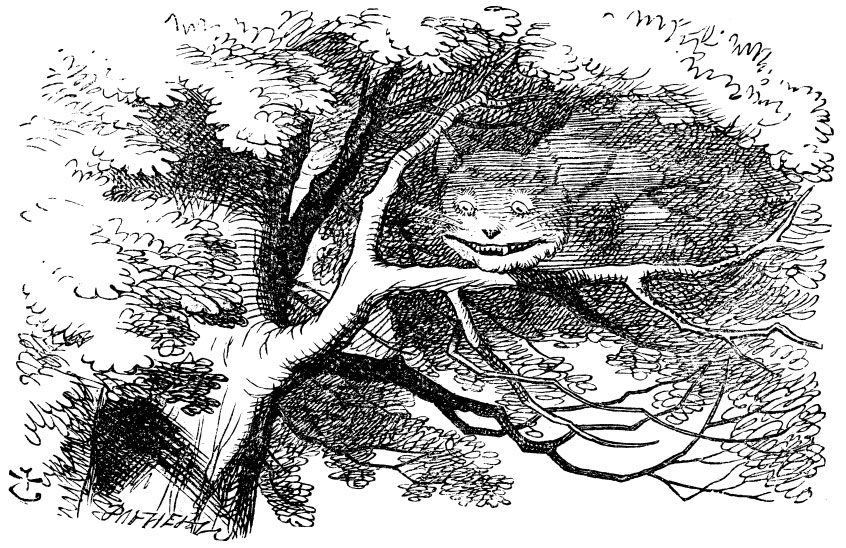
Cheshire cat fades away. “ Well! I’ve often seen a cat without a grin,” thought Alice, “ but a grin without acat! It’s the most curious thing I ever saw in all my life.

At the mad tea party.

The Mad Hatter.

The Mad Hatter and the White Rabbit put the dormouse into the soup.
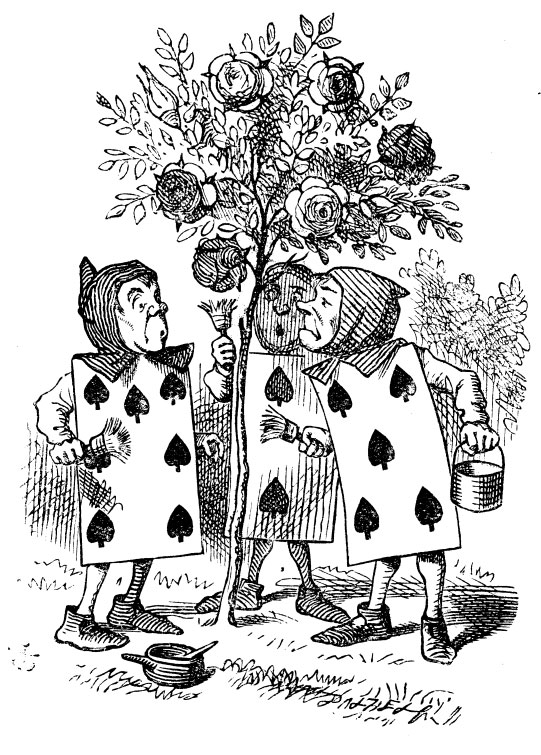
Colouring the white roses red.
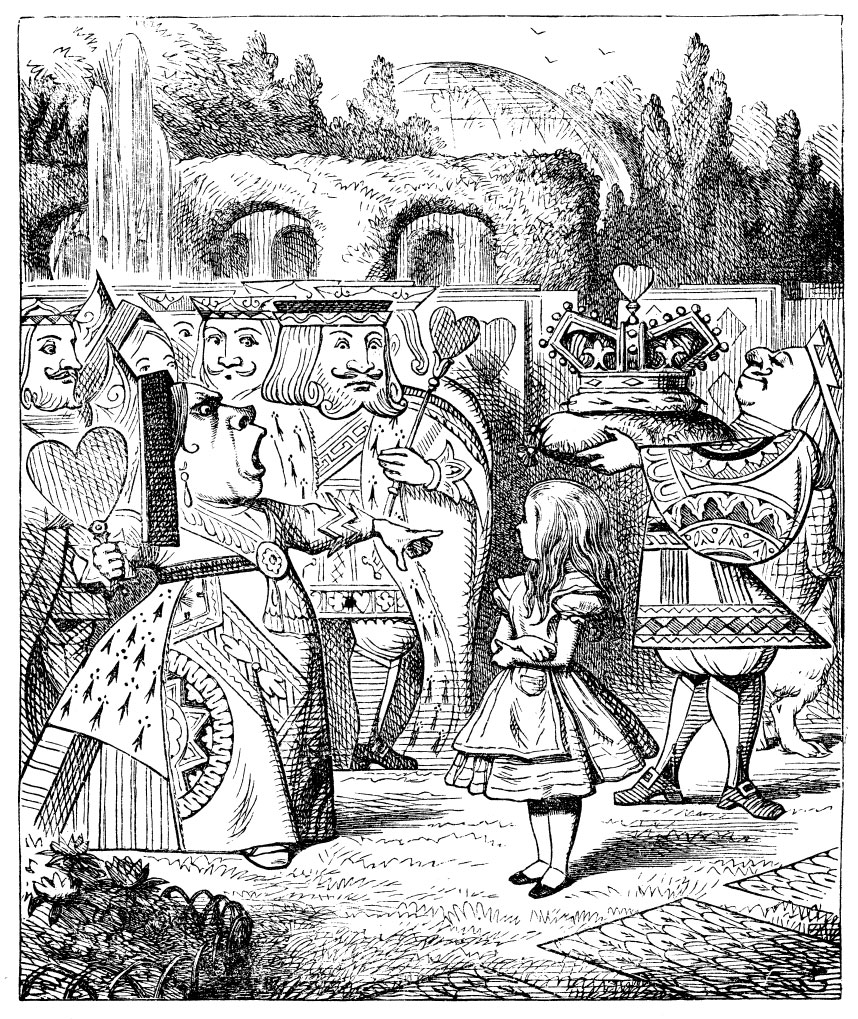
Alice meets the queen and “Off with her head!” she commands.
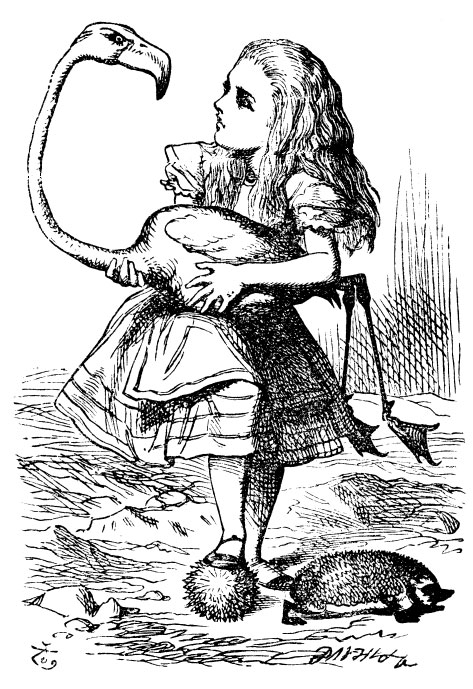
Alice playing croquet with the flamingo and hedgehog.
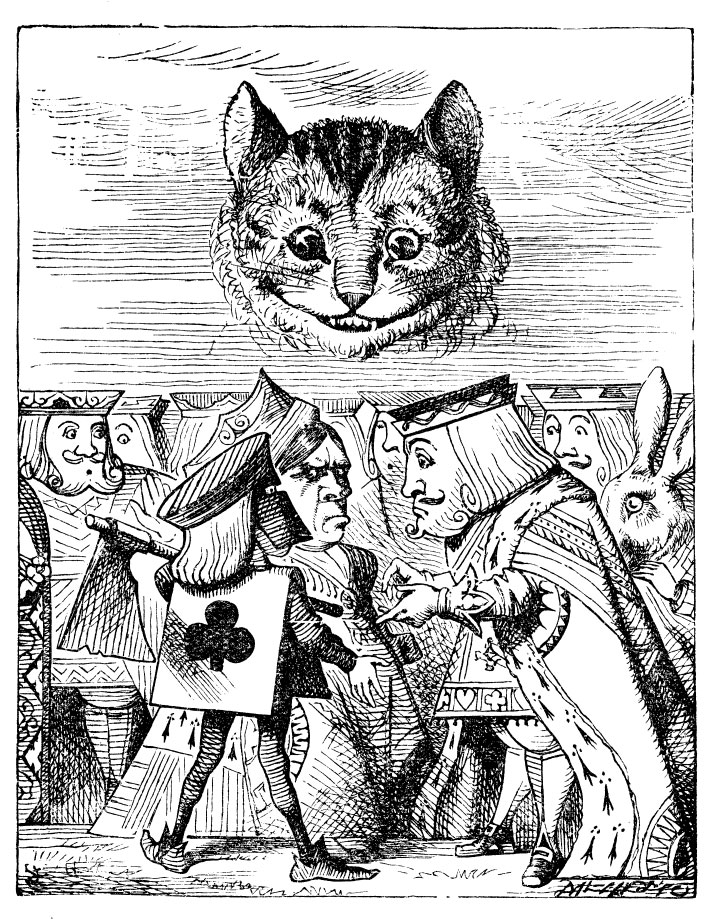
“Off with his head” queen said for Cheshire cat. The executioner said, “..you couldn’t cut off a head unless there was a body to cut it off from..”
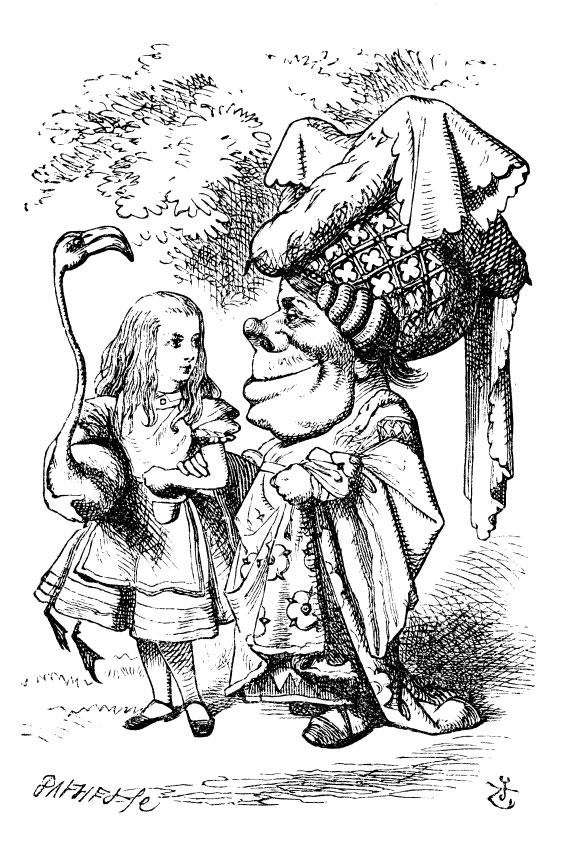
Alice and Duchess “Take care of the sense, and the sounds will take care of themselves.’ ””

Gryphon was lying fast asleep in the sun.
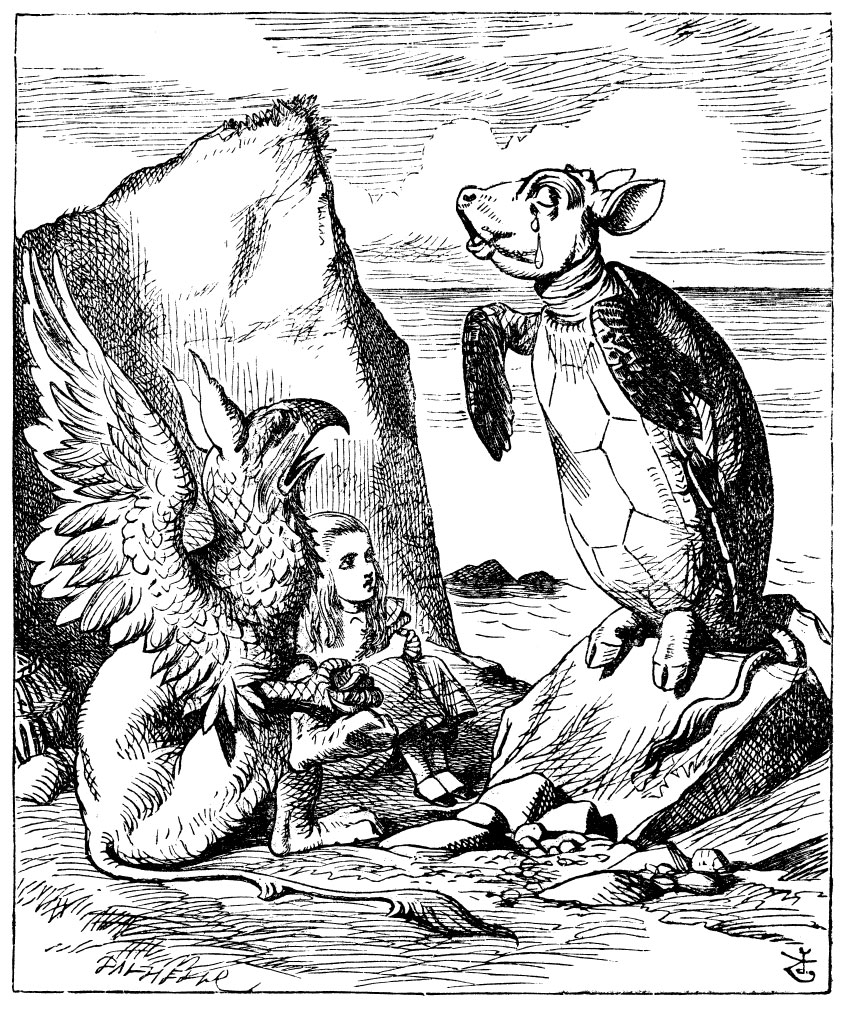
Alice hears the Mock turtle’s story.
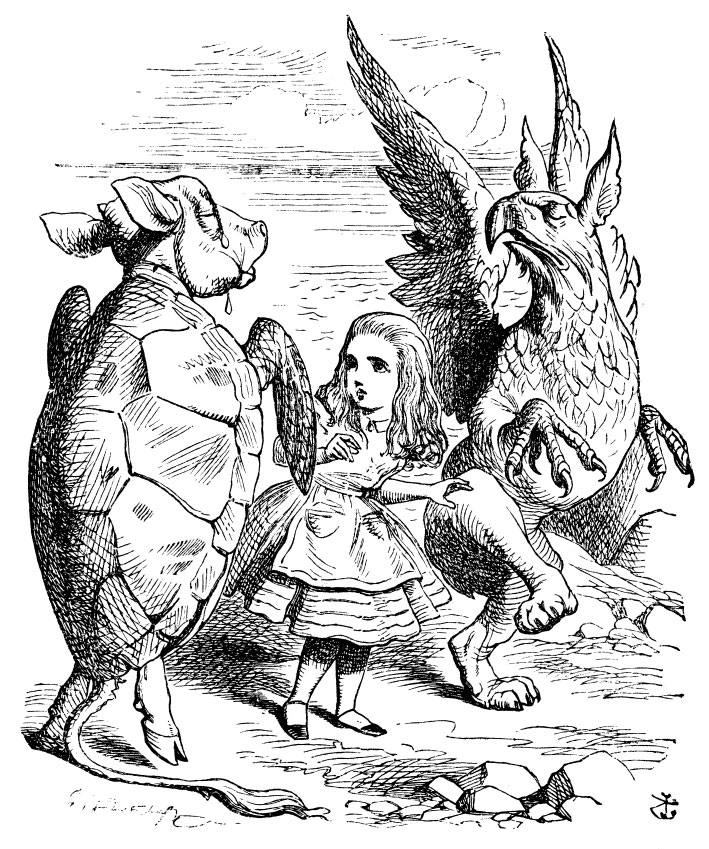
So they began solemnly dancing round and round Alice.
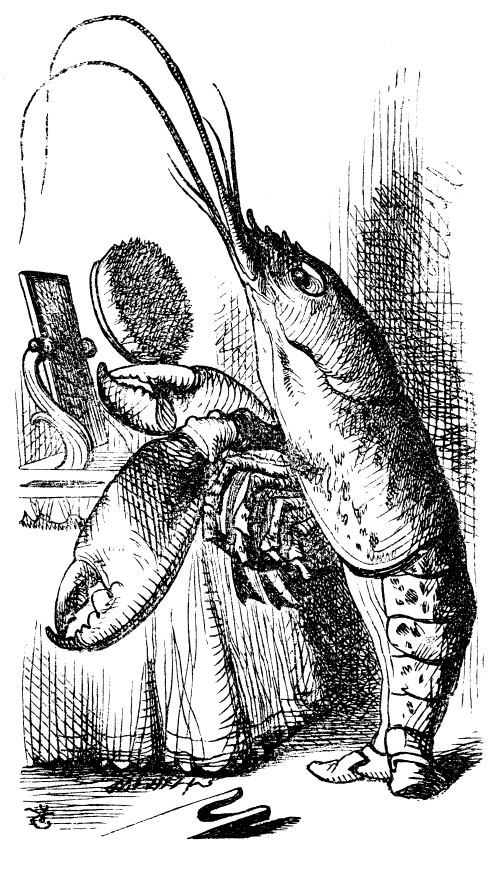
The Lobster quadrille.
White Rabbit blew three blasts on the trumpet,White Rabbit blew three blasts on the trumpet,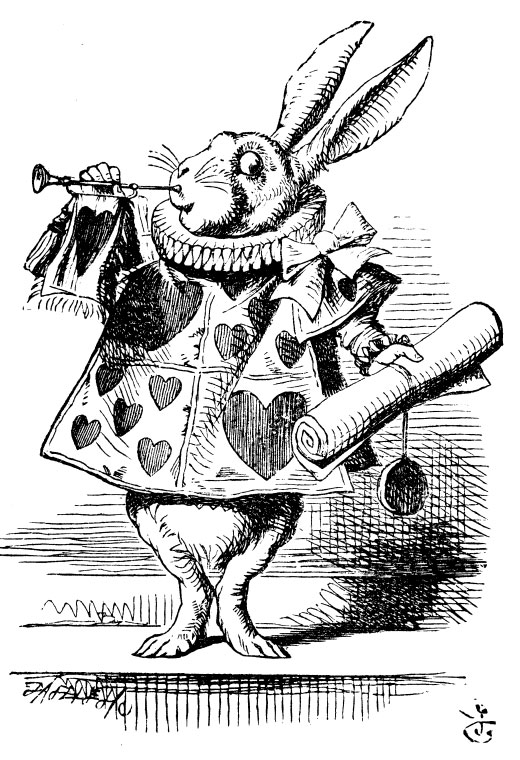
White Rabbit blew three blasts on the trumpet, and reads the accusation of stealing the tarts.
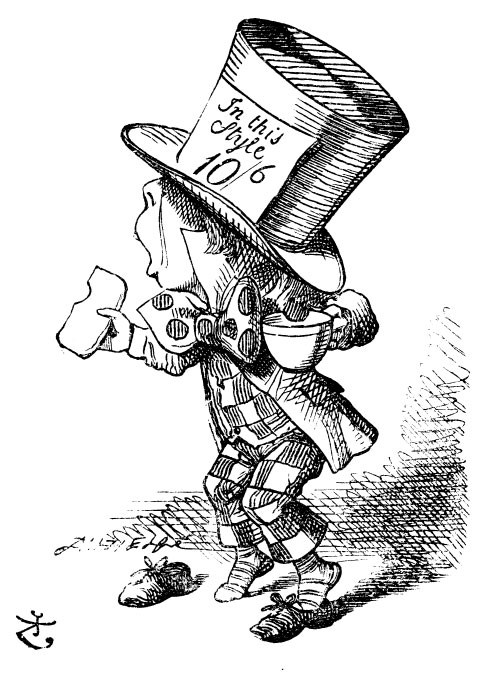
Mad Hatter is the first witness. He comes with a tea cup in one hand and bread and butter in the other.
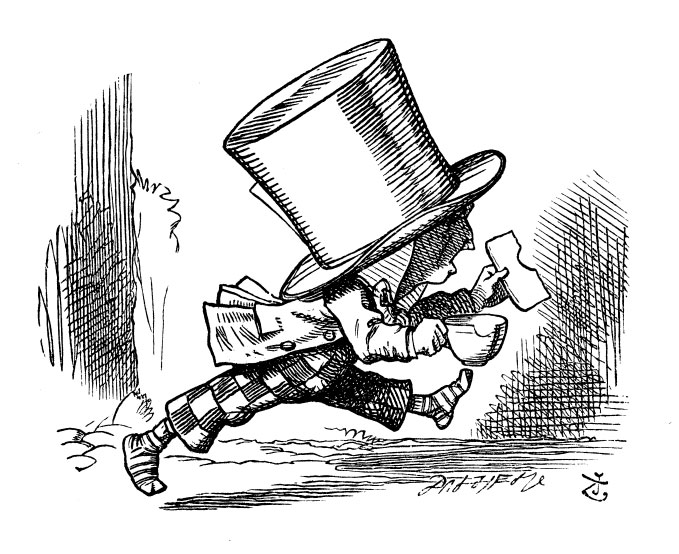
“Td rather finish my tea,” said the © Hatter, with an anxious look at the Queen, who was reading the list of singers.
“You may go,” said the King; and the Hatter hurriedly left the court, without — even waiting to put his shoes on.
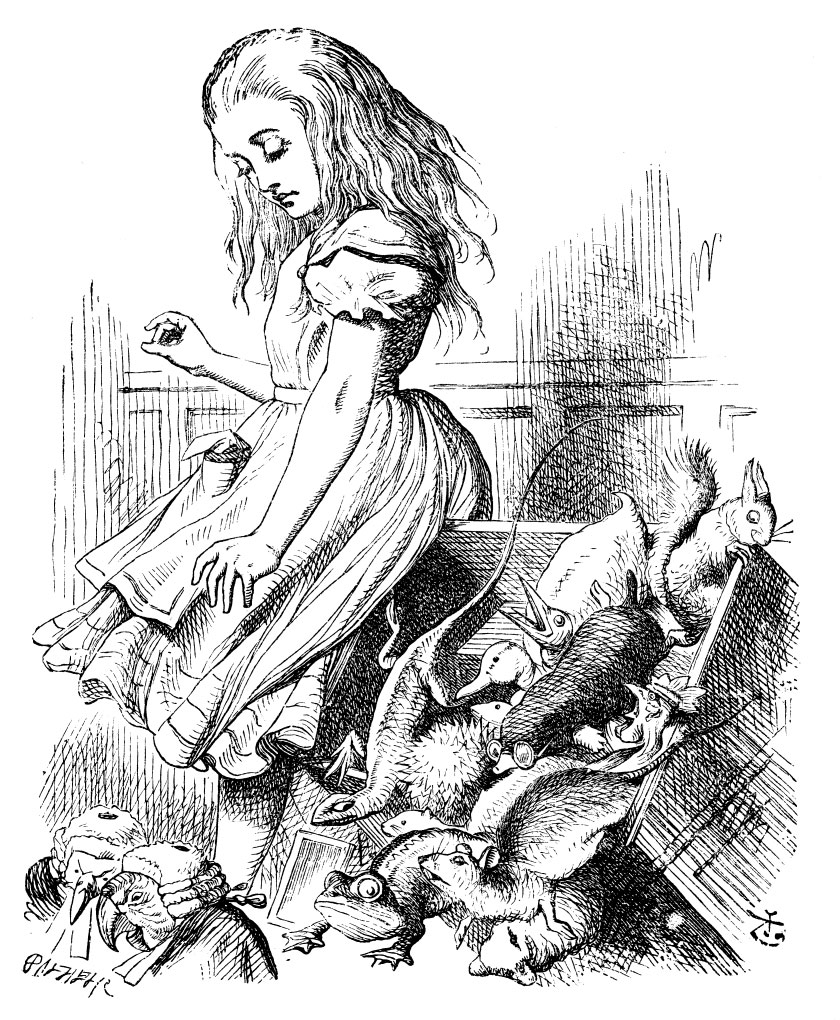
The large Alice tips the jury box sending all jurors in a panic.
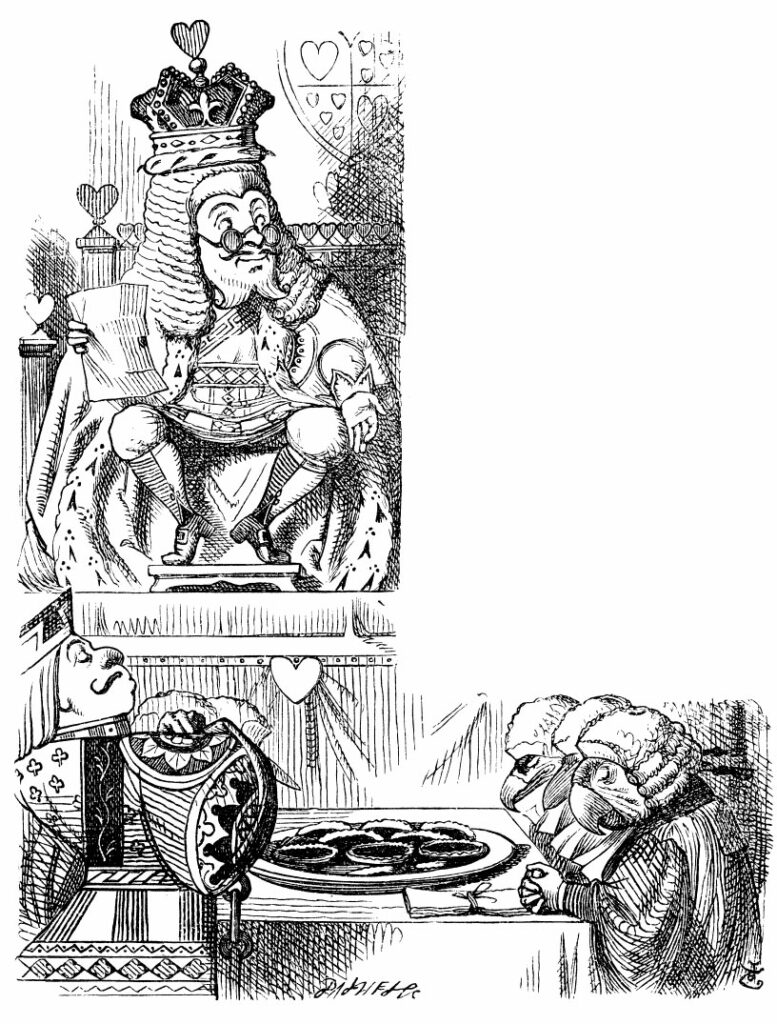
“Let the jury consider their verdict,” the King said, for about the twentieth time that day.
”No, no!’ said’ the, Queen. “Sentence first —verdict afterwards.”
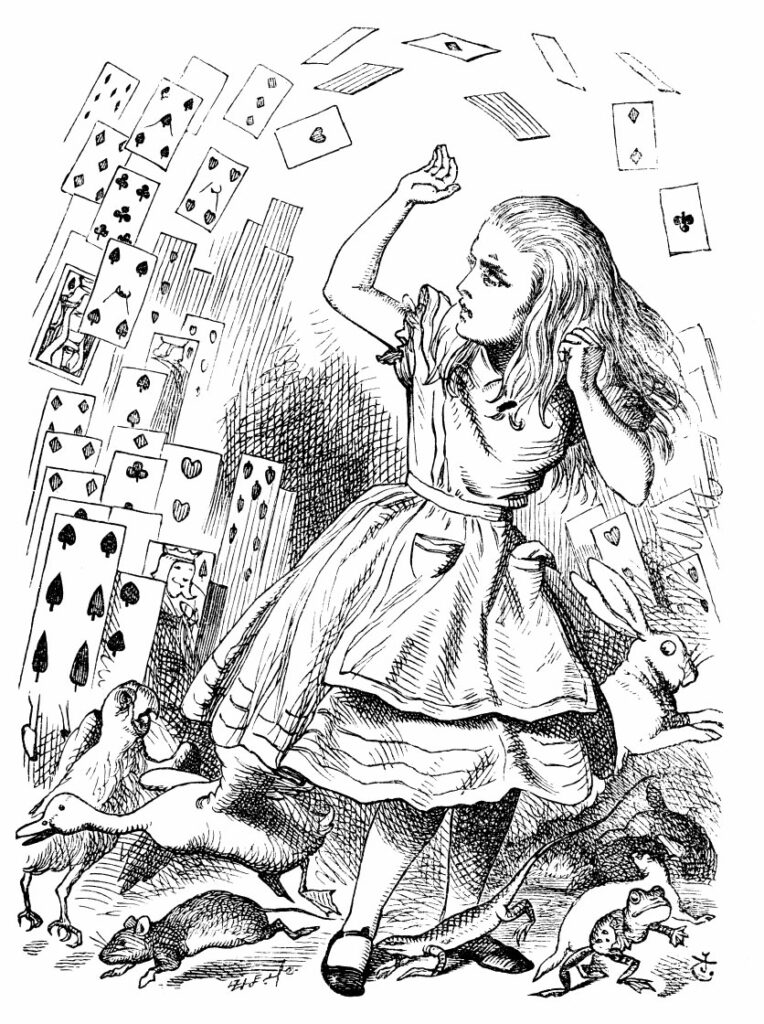
“Who cares for you?” said Alice, (she had grown to her full size by this time.) “You’re nothing but a pack of cards!”
At this the whole pack rose up into the air, and came flying down upon her…













































